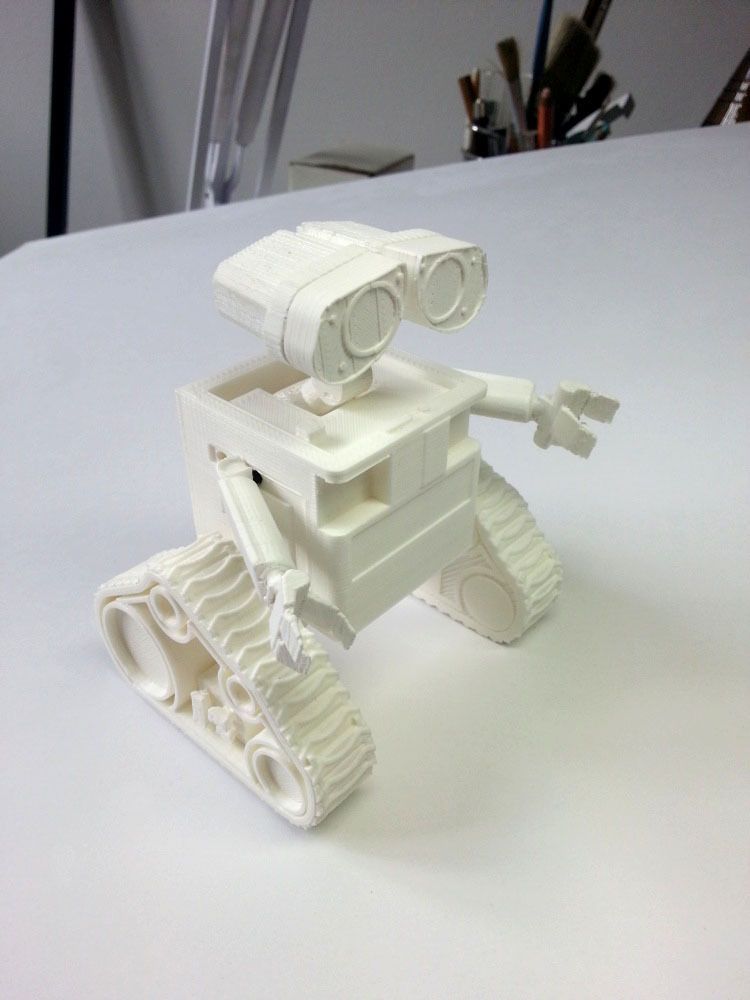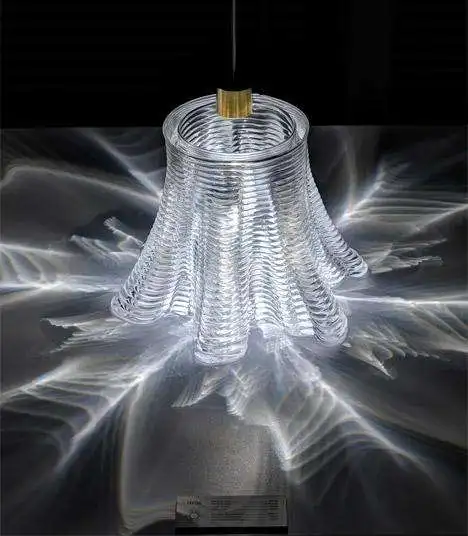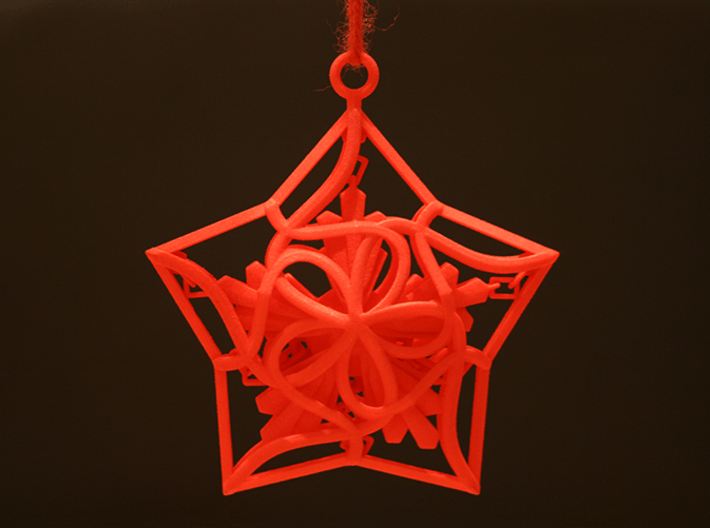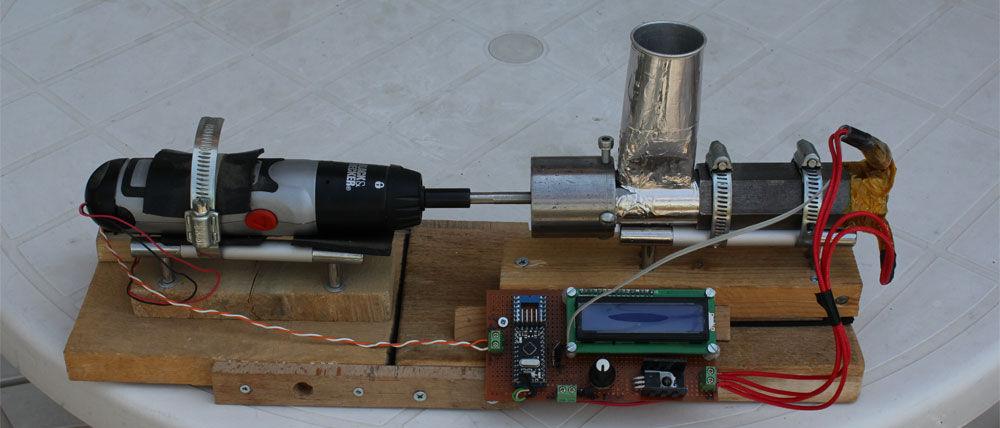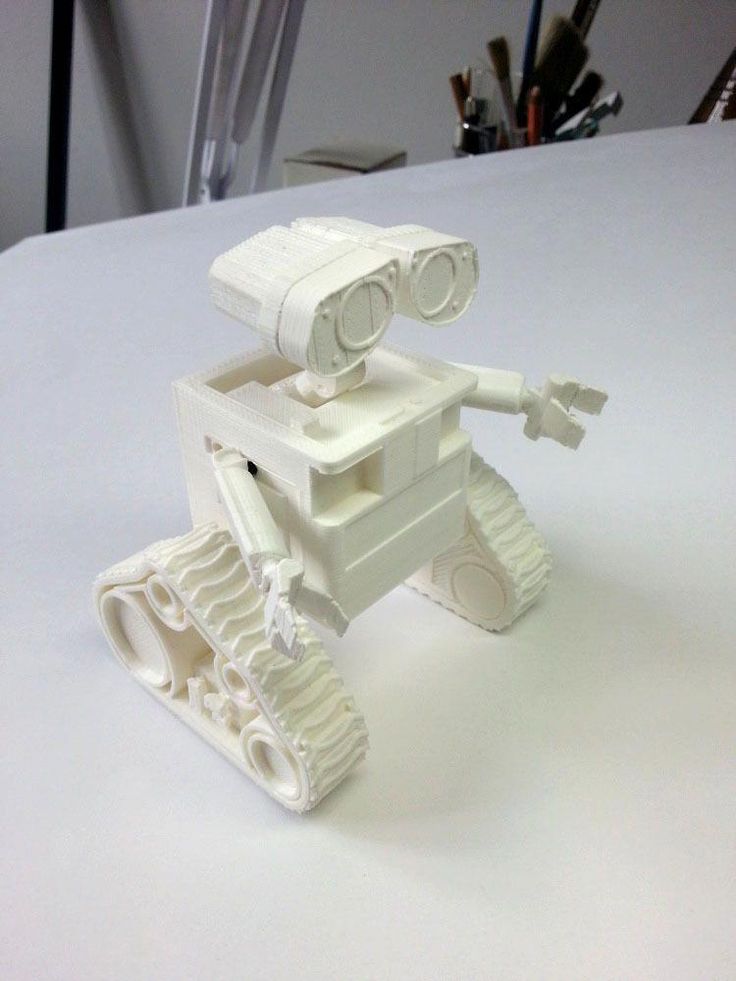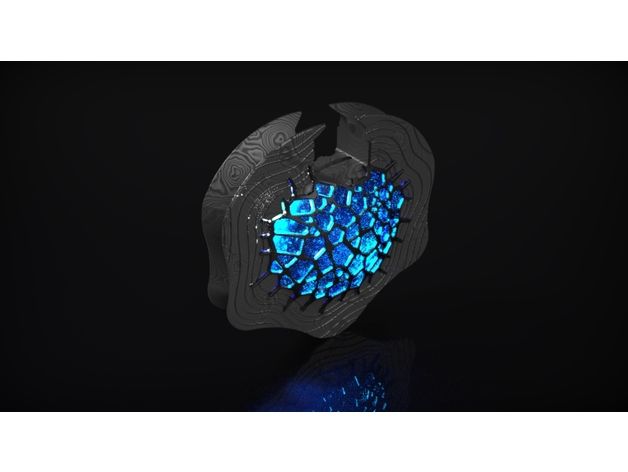How 3d printing helps businesses
3D Printing Applications for Business
- 3D printing can help your business with prototyping or low-volume manufacturing. It also has applications in design, biomedical devices and mechanical parts.
- You should guarantee your supply chain and product quality to protect against unlicensed 3D printing. You should also hire only people with skills and experience relevant to your 3D printing projects.
- Your small business could benefit from a 3D printer, such as the Original Prusa MINI, Ultimaker S3 or Anycubic Vyper.
- This article is for small business owners who manufacture products and are interested in 3D printing.
Manufacturing plays an essential role in the lives of many entrepreneurs and small business owners. As technology continues to improve, new methods of manufacturing continue to emerge as viable methods for small- and mid-scale production. Among these is 3D printing, and its widespread use in manufacturing has grown in recent years.
Just because 3D printing is an exciting way to manufacture doesn’t mean it makes sense for your business. There are still issues regarding cost and speed. In addition to the drawbacks, rumors constantly pop up discussing “the next big thing” in 3D printing.
With a lot of misinformation surrounding the future of 3D printing, we turned to experts to develop a clear picture of how 3D printing can help your business and determine what the future of 3D printing holds.
What is 3D printing?
3D printing is the process by which three-dimensional digital models are made into physical objects. Working in tandem with computer software, the 3D printer reads a digital STS file on a computer and then uses a filament or a resin to render the digital representation in tangible material, layer by layer.
3D printers employ a variety of materials, including plastics and polymers, steel, titanium, gold, and ceramic. This versatility means 3D-printed models can be used for various objects, including artistic sculptures and airplane components.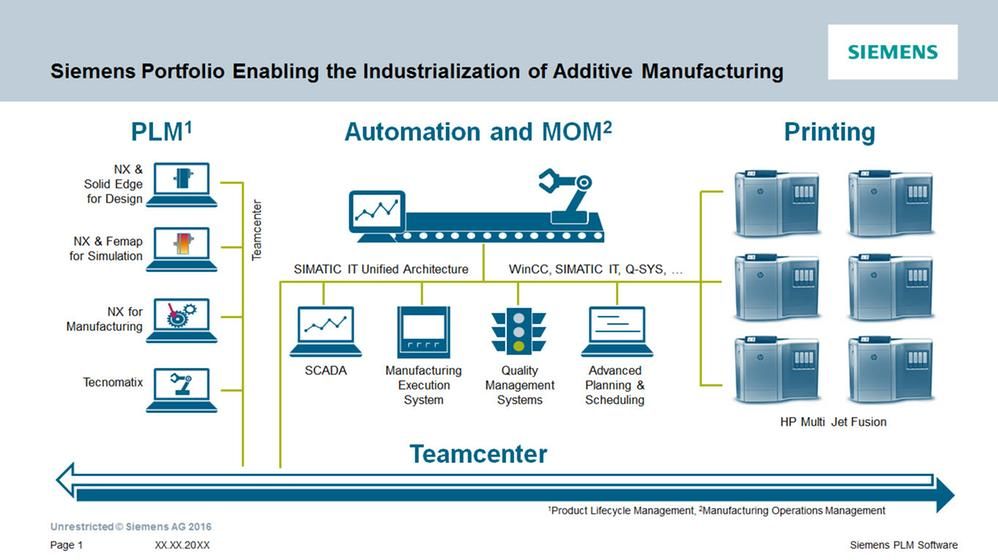 Some 3D printers can even print proteins and chemicals, enabling the devices to create foods and medicines.
Some 3D printers can even print proteins and chemicals, enabling the devices to create foods and medicines.
“I don’t think there’s a component made today that won’t somehow be touched by 3D printing in some fashion or another, whether directly or indirectly,” said Mark Cola, former CEO of 3D printing company Sigma Labs.
Developments in the industry continue to arise. In fact, Statista projects the global 3D printing industry to reach $37.2 billion in 2026. That’s more than double the 2022 projection of $17.4 billion. Still, 3D printing is predominantly used for just a handful of project types.
Did you know? The 3D printing industry could more than double in size by 2026, according to market projections.
Applications for 3D printers
Prototyping
One of the oldest uses for 3D printers is the quick and efficient creation of prototypes. Since the printers were invented in 1983, companies have employed 3D printing to create a workable model of their desired end product, either to test the concept or present it to future investors.
“Before we called it ‘3D printing,’ it was called ‘rapid prototyping,'” said Greg Paulsen, director of applications engineering for third-party manufacturer Xometry. “It was seen as a way to get close enough to a functional model.”
Now that’s changing. While entrepreneurs still gladly use 3D printing for prototyping, the technology has become more accessible and adaptable, leading to new applications.
“The main development I’d summarize is moving from a primarily prototyping solution, currently the killer [application] for 3D printing, to end-part production,” said Filemon Schoffer, co-founder and CCO of online manufacturing platform Hubs. “This is already happening but will continue to accelerate.” [Related: How to Test a Business Idea]
Low-volume manufacturing
Though 3D printers can be slow, they’re adept at fulfilling low-volume production needs. Much like with prototyping, if an entrepreneur is ready to launch a new product and isn’t certain of the demand, they can print a small amount to test the waters. Low-volume production is also common for medical devices, for example, as manufacturers create, test and redesign their products for optimization.
Low-volume production is also common for medical devices, for example, as manufacturers create, test and redesign their products for optimization.
While low-volume manufacturing suits the capabilities of 3D printing, advances in technology make 3D printing a viable option of higher-volume production. Small businesses should consider the potential value of 3D printing in the mass customization of goods.
“Currently, 3D printing is mostly used in industries and applications with low-volume, high-unit cost and the need for customization, where costs of 3D printing are outweighed by the benefits,” said J. Scott Schiller, global head of customer and market development for HP Inc.’s 3D printing business. “However, [technological] improvement has been pushing the limits of the technology and unlocking its use in mass production applications. In the next five years, we’ll see part design become more function- and volume-oriented, and 3D printing will begin to fit into production systems across industries.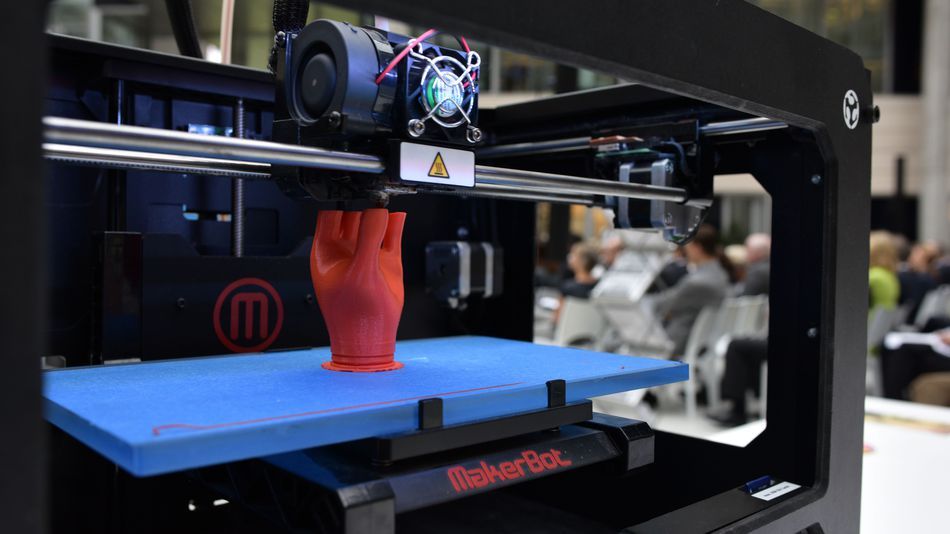 ”
”
Mechanical parts
Another beneficial use for 3D printers is the creation of mechanical parts – either for sale in large industries or for personal repairs. Many products of 3D printing aren’t sold directly to consumers, but are created by companies – or third-party contractors – as components of a larger project. One example is GE Aviation’s 3D-printed fuel nozzle, which rolled out in 2015.
Small machine shops or individuals looking to make home repairs can also employ the same techniques for their projects. 3D printing has made it far easier to reproduce parts for machines that might no longer be in production or would take too long to arrive.
Biomedical devices
One particularly exciting aspect of 3D printing is the ability to print biomedical devices customized to individuals. For example, some companies are developing 3D-printed, custom prosthetics for amputees; these prosthetics are designed to be far more comfortable for the user.
“[Biomedical engineers are] 3D printing components for people that better match their characteristics than the off-the-shelf components,” Cola said. “I think where you see this tech going is more toward the performance and athletic side of the business, where you have athletes fully regain their performance levels after injuries, or maybe even enhance their performance levels with 3D components tailored to their needs.”
Other notable uses of 3D printing in the healthcare space are in ongoing efforts to develop printable organs for patients in need of transplants, and the printing of chemicals and proteins to develop new medicines.
Design
When engineers design a product, they must keep in mind the limitations of the production process. 3D printers can create parts previously considered unachievable with traditional manufacturing techniques. This opens an entirely new world in the design phase, which can lead to better, more efficient products and components.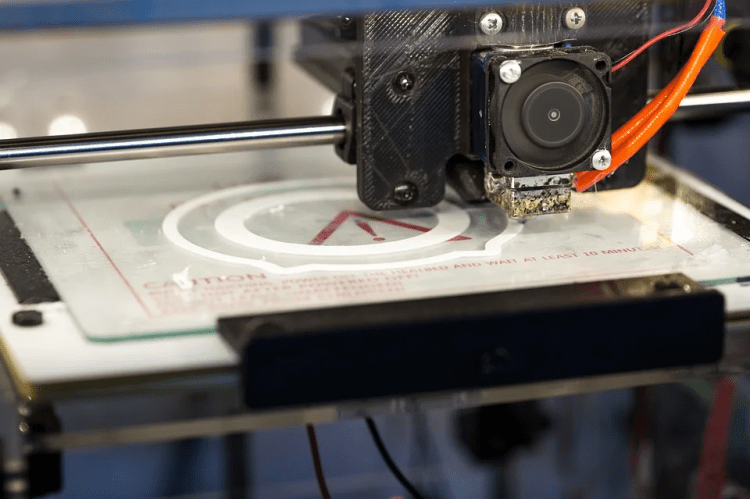 Many of these 3D-printed creations add value to important products, while others are downright unusual.
Many of these 3D-printed creations add value to important products, while others are downright unusual.
“It opens your mind up to everything you can do with it,” Paulsen said. “I’d really like to take this technology off the pedestal and say, ‘This is a normal manufacturing process,’ just like anything else.”
Copyrights and 3D printing
As 3D printers proliferate, so do the means of easily reproducing protected intellectual property. Roy Kaufman, managing director of business development and government relations at Copyright Clearance Center, warns that the manufacturing industry could be approaching its “Napster moment.” By that, he means the experience of the entertainment industry when music and movies could be quickly reproduced and pirated online.
“I think we’re going to see, as we see with almost every technology, two things happen: Things get cheaper, and they get better,” Kaufman said. “As the quality of the printers gets better, the available materials to print get better, and as costs come down, you get to that moment – the Napster moment. [That’s] when the means of reproduction are now so diffuse, the ability to reproduce at a low cost had been so spread out, that you can no longer really enforce your rights entirely effectively with existing IP [intellectual property] laws.”
[That’s] when the means of reproduction are now so diffuse, the ability to reproduce at a low cost had been so spread out, that you can no longer really enforce your rights entirely effectively with existing IP [intellectual property] laws.”
That moment could be coming quickly, Kaufman said, or it might not come at all. However, the mere fact that 3D printers are becoming more widespread makes it a plausible scenario that requires appropriate strategic planning. Kaufman suggested insulating your company by guaranteeing your supply chain and the quality of your products.
Tip: Protect your products from unlicensed 3D printing by guaranteeing your supply chain and your product quality. Also take measures to make sure your own business doesn’t accidentally steal intellectual property.
“[The consumer] might pay a premium for the assurances of the supply chain,” Kaufman added, “but they want to know that it’s not just a matter of what [the product] looks like but that it’s right.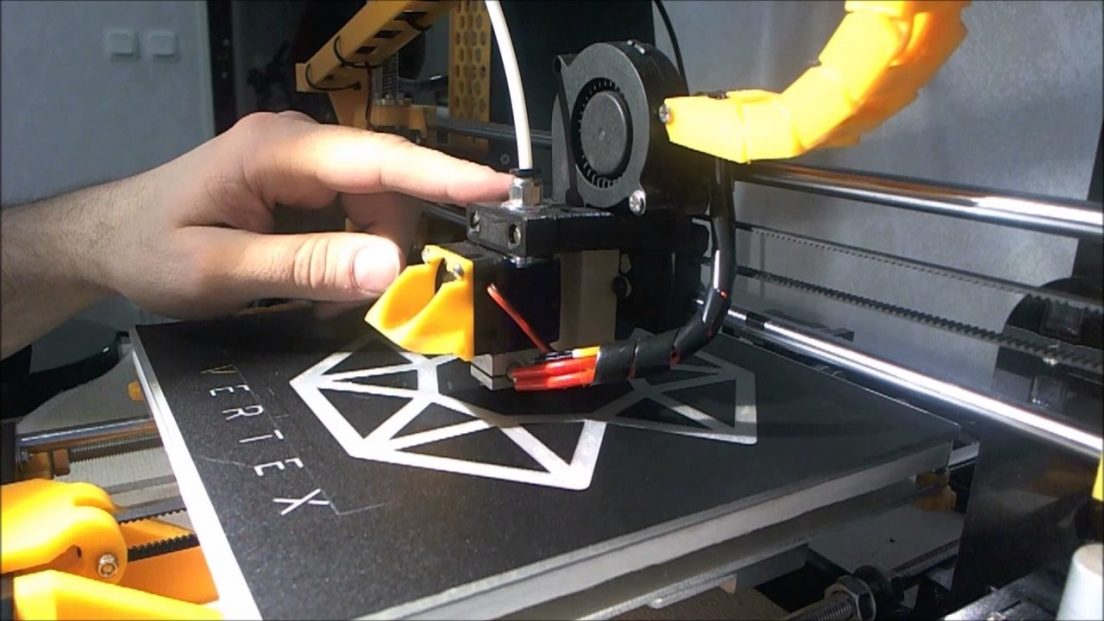 Testing and certification will become more important.”
Testing and certification will become more important.”
Within these major developments, there also lies opportunity. 3D printing will allow manufacturers to license the rights to their designs, which could be made downloadable to the licensee to 3D print. The technology could also bring production levels more in line with demand, thereby saving on production, shipment and storage costs.
“If you look at a typical pharmacy, for example, they have all these medicines with a sell-by date and are hoping someone will come in and need a prescription for it before they have to throw it out,” Kaufman said. “They pay to store it, pay to save it, and maybe even have to keep it in a central warehouse. But imagine your local CVS can print everything under license, get the chemicals from the pharmaceutical company, and maybe even [the] machine. The company doesn’t have to make things that might never get taken, never has to ship them, and never has to store them. Everything can be manufactured as needed. ”
”
The future of the industry
According to Sarah Boisvert, founder of Fab Lab Hub, “we’ve gotten past the hype stage” of 3D printing. The rumors about being able to 3D print everything under the sun have died down, and people are beginning to understand the practical aspects of 3D printing. This doesn’t mean the industry doesn’t face challenges moving forward, though.
Boisvert mentioned the need for skilled manufacturing workers. She isn’t alone in her concern, as the National Association of Manufacturers (NAM) continues to harp on the difficulties manufacturing companies face when seeking qualified employees. In a recent NAM study, 46.3% of small and midsize manufacturers surveyed consider finding quality employees a serious problem.
With 3D printing becoming an increasingly feasible integration into the supply chain for manufacturers, it’s critical that manufacturers have the employees with the skill set to properly work the printers in an efficient and timely manner. Additionally, the current price and speed of 3D printing can pose an issue for supply chain integration, Boisvert explained. At the end of the day, the decision to use 3D printing boils down to whether it truly makes sense for your business and if the cost is worth the benefit.
Additionally, the current price and speed of 3D printing can pose an issue for supply chain integration, Boisvert explained. At the end of the day, the decision to use 3D printing boils down to whether it truly makes sense for your business and if the cost is worth the benefit.
“We use everything,” Boisvert said of her manufacturing process for Potomac Photonics, another company she helped found. “We use 3D printing, laser cutting … I think it’s integrating 3D printing into the production flow and into the supply chain. No matter what tool you have, it’s about choosing the right tool for the job.” [Related: 3D Printing Jobs]
Top 3D printer picks for at-home small businesses
3D printing technology has come far enough that it’s now available at home. In fact, the 3D printers below are great choices for at-home small businesses.
1. Original Prusa MINI
The Original Prusa MINI is the best overall choice for at-home small businesses. It takes up less than 2 square feet of precious desktop space, and its build area occupies about 355 square inches. Its layer resolution spans 50 to 200 microns, and you can easily use it with many types of filaments. Calibration can be challenging, but for the $350 price, this issue might be worth bearing.
It takes up less than 2 square feet of precious desktop space, and its build area occupies about 355 square inches. Its layer resolution spans 50 to 200 microns, and you can easily use it with many types of filaments. Calibration can be challenging, but for the $350 price, this issue might be worth bearing.
2. Ultimaker S3
The Ultimaker S3 is your best bet for printing larger objects. You can use it with many materials and achieve a layer resolution of 20 to 600 microns. It’s also relatively compact for a large object printer, with a build area of about 530 square inches. However, it’s known to be slow to print, and its $4,080 price tag is quite high.
3. Anycubic Vyper
If you need to print large objects but can’t afford Ultimaker’s models, the Anycubic Vyper might better suit your needs – and budget. You’ll get at least 100 microns of layer resolution for $680. You also get about 950 square inches of build area and a built-in accessories drawer. Some reviewers, though, have noted that the Vyper results in excessive initial stringing and uneven build quality.
Some reviewers, though, have noted that the Vyper results in excessive initial stringing and uneven build quality.
3D printing continuously evolves. Years ago, rumors spread about the possibility of 3D printers being in every home by now. While that notion proved too ambitious, there are practical implications of 3D printing that can benefit your small business.
3D printing consistently shows its worth, based on its prototyping, design considerations and mass customization. Keep tabs on changes as the industry evolves, and use 3D printing when it’s cost- and time-effective for your company.
Max Freedman and Adam Uzialko contributed to the writing and reporting in this article. Source interviews were conducted for a previous version of this article.
6 Ways 3D Printing Will Give Your Company a Competitive Edge
Many managed IT service providers are finding it necessary to start offering 3D printing solutions. Though the technology isn’t brand new anymore, many businesses have yet to embrace this technology and without knowing are losing their competitive edge.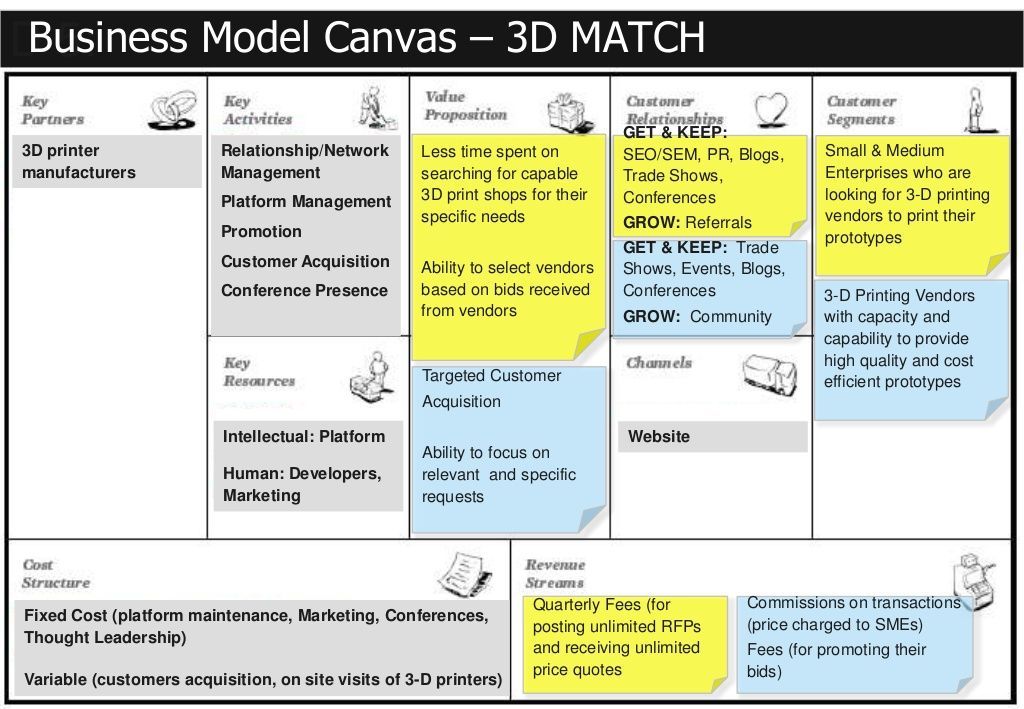 It’s high past time to update your business technology! According to statistics, 71.1% of manufacturers have embraced 3D printing and 52% of manufacturers foresee the technology growing tremendously over the next 3 to 5 years. These statistics should have any company that has yet to invest in 3D printing worried. The following are some ways 3D printing will give you a competitive edge against your business rivals:
It’s high past time to update your business technology! According to statistics, 71.1% of manufacturers have embraced 3D printing and 52% of manufacturers foresee the technology growing tremendously over the next 3 to 5 years. These statistics should have any company that has yet to invest in 3D printing worried. The following are some ways 3D printing will give you a competitive edge against your business rivals:
1. Timely Development of Prototypes
Developing prototypes and blue-chips is a vital aspect of any manufacturing process. However, this step is known to take lots of time, effort, and resources as everything must be perfect. To achieve this, the piece(s) will undergo many modifications and alterations before it is finally accepted. Not only does this take time, but it also incurs high costs. Due to being computer-controlled and the fact that it gives you a preview of the final product before processing, 3D printing allow you to produce prototypes in a much shorter time frame while saving you money.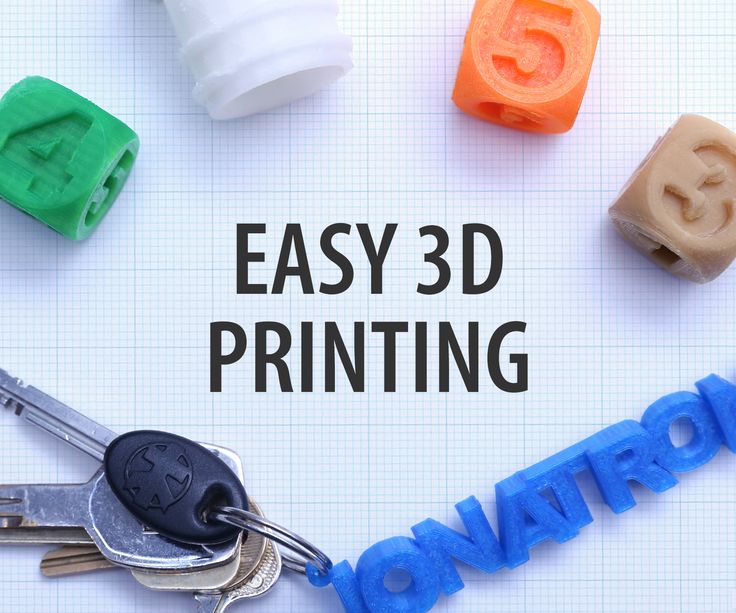
2. High Quality Products
The modern customer is all about quality. He or she would rather pay more for a top-notch product than pay less for a substandard product. 3D printing solutions help you offer your market high quality products at a lower cost. The computer-controlled 3D printer provides an exact replica of the original product or prototype ensuring the quality is second-to-none. This explains why important products such as dental braces, jet engine fuel nozzles, and aircraft and satellite parts are being produced using 3D printers.
3. Less Equipment
In comparison to a manufacturing plant, 3D printers occupy a smaller space and yet produce similar (if not better!) products. The equipment can easily be adjusted to produce different parts unlike the traditional plant operation that produces a specific piece. Less equipment means you save on space, lower the cost of operation and maintenance, and also speed up the manufacturing process. There is also less concern over an interruption that could halt the operation as 3D printers are more versatile.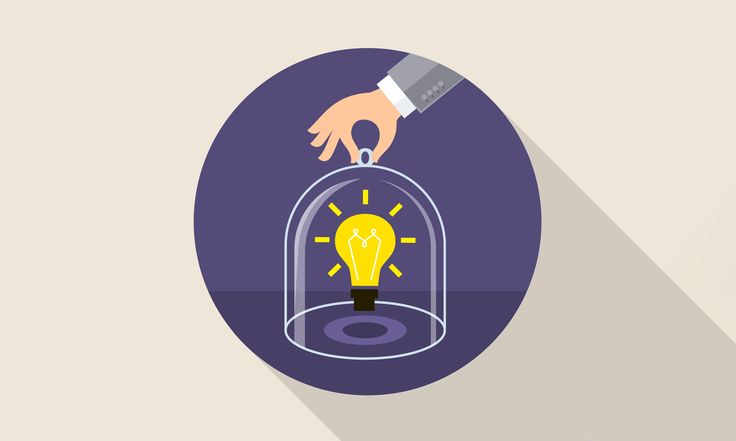
4. Reduces Overhead Costs
One of the biggest concerns a company has is overhead costs which include rent, administrative costs, power, and much more. A large plant will occupy a larger space (higher rent), will require more operators (higher cost of labor), and will incur more cost in terms of maintenance and service. The costs associated with 3D printing are much lower because the printer occupies lesser space, requires minimal human intervention, and is cheaper to maintain and service due to fewer moving parts. As a company you will be better positioned to offer lower prices to your customer due to lower overhead costs when using 3D printing.
5. Minimal Manpower
Operating 3D printing equipment isn’t as labor intensive as the traditional manufacturing plant. In fact, most advanced 3D solutions are 100% computer-controlled and come with Smart technology. Considering that it is much smaller than the usual processing plant, the number of people required to maintain or service a 3D printer is also fewer. Today’s printers use a range of raw materials, can be integrated with different software, and can even operate remotely.
Today’s printers use a range of raw materials, can be integrated with different software, and can even operate remotely.
6. Boost Efficiency
Unless your systems are efficient and reliable, you will spend lots of time, effort and money correcting errors. For instance, a faulty production line may cease production causing delays (and, of course, angry customers). Getting a replacement part may take days, if not weeks. As the price of printers drops and technology continues to improve, 3D printing is becoming more efficient and reliable. Not only is the printer less likely to break down, it is also easy to replace a faulty component. This allows you to focus on other important areas of the company.
There you have it—six ways 3D printing offers your company a much-needed competitive advantage. It allows you to produce prototypes faster, reduces the cost of production, requires less input (human resources and equipment), and reduces overhead. Additionally, efficiency and productivity is vastly improved. To enjoy high-quality and reliable 3D solutions, it pays to engage with a reputable and experienced managed IT services provider. Not only will the firm offer the latest and best solutions, but also they will be available to provide technical support.
To enjoy high-quality and reliable 3D solutions, it pays to engage with a reputable and experienced managed IT services provider. Not only will the firm offer the latest and best solutions, but also they will be available to provide technical support.
Advantages and disadvantages. How 3D printing affects business and our lives - Trade on vc.ru
What is 3D printing?
1023 views
3D printing is a process in which a digital model is turned into a tangible, solid three-dimensional object, usually by applying many successive thin layers of material. 3D printing has become popular so quickly because it makes manufacturing accessible to more people than ever before. This is partly due to the price (the starting price for a basic 3D printer is around $300) and the small size of the printers compared to traditional manufacturing.
How does it work?
First, the virtual design of the object is done. This design will work like a blueprint for a 3D printer. Virtual design is done using computer-aided design (CAD) software, a type of software that can produce accurate drawings and technical illustrations. A virtual design can also be created using a 3D scanner, which creates a copy of an existing object by photographing it from different angles.
Virtual design is done using computer-aided design (CAD) software, a type of software that can produce accurate drawings and technical illustrations. A virtual design can also be created using a 3D scanner, which creates a copy of an existing object by photographing it from different angles.
CAD software for creating a 3D model
Once the virtual model has been created, it must be prepared for printing. This is done by splitting the model into many layers using a process called slicing. When slicing, the model is cut into hundreds or even thousands of thin horizontal layers using special software.
Slicing the 3D model
After the model has been cut, the slices are ready to be loaded onto the 3D printer. This is done using a USB cable or Wi-Fi connection to move the sliced model from the computer to the 3D printer. When the file is loaded onto the 3D printer, it reads each piece of the model and prints it layer by layer.
How are things printed?
The 3D printer will begin printing layers of material in a process known as material extrusion.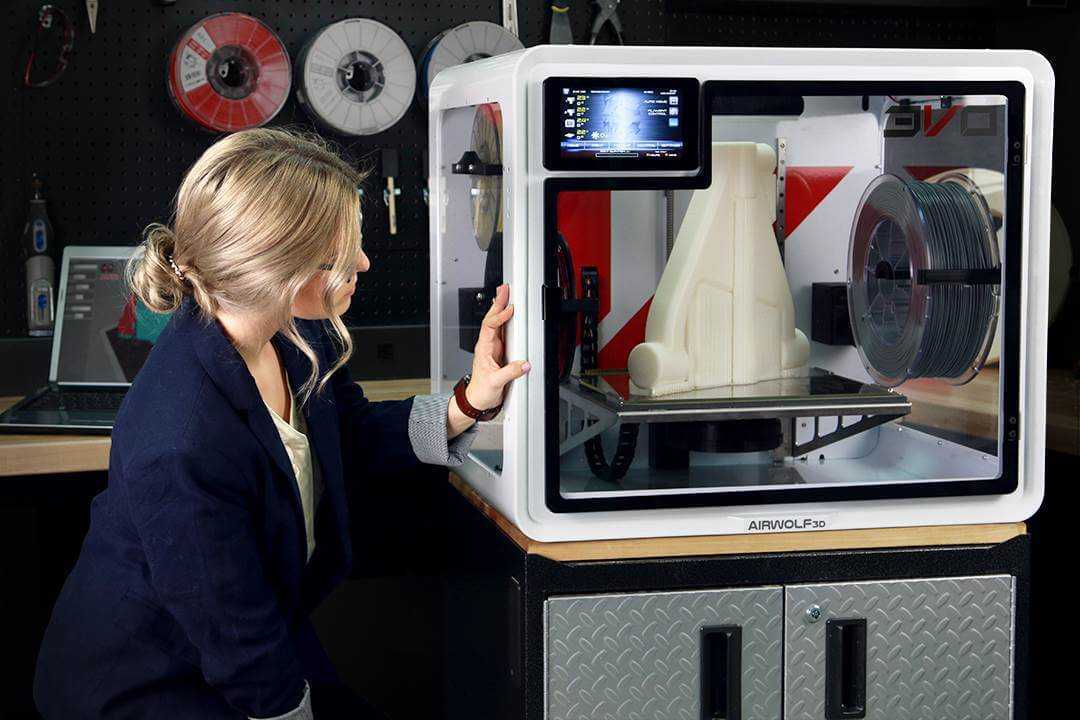 Depending on the type of 3D printer and the material used, there are several methods for material extrusion.
Depending on the type of 3D printer and the material used, there are several methods for material extrusion.
3D printer nozzle.
Most commonly, a 3D printer has a nozzle that ejects a semi-liquid material such as molten plastic, metal, or cement. The extrusion nozzle can move both horizontally and vertically as it precisely places the material following the pattern of the digital model layer by layer.
This process is repeated until the 3D printer has reproduced each layer of the extruded digital model.
What kind of things can be done with 3D printers?
Almost anything you can imagine can be turned into a 3D printed design. 3D printers are helping designers, engineers, and even ordinary people create complex objects in ways that previous manufacturing methods were not capable of.
3D printers are being used to create toys, phone cases, tools, clothing, tables, lamps, pottery, art, and even cars.
Medicine is also finding new ways to use 3D printing to help patients.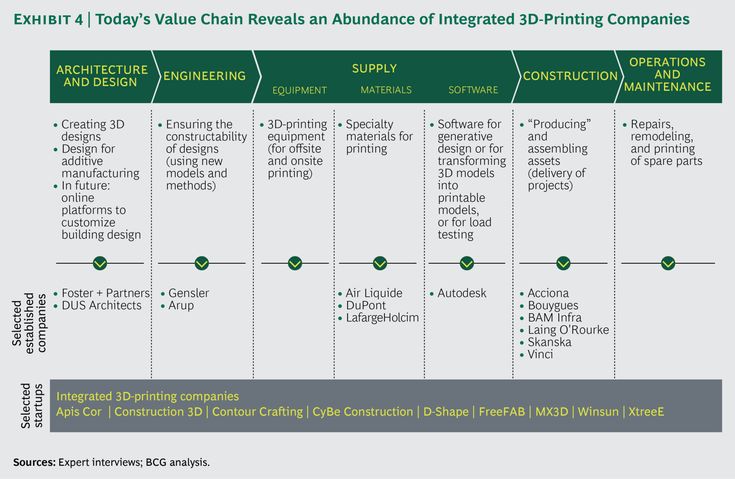 Physicians can now print 3D medical models that are so accurate that surgeons can essentially test-run a patient's 3D model before actually operating on that patient. 3D printed models are also being used to create less expensive, stronger and more suitable prostheses for people who have lost limbs.
Physicians can now print 3D medical models that are so accurate that surgeons can essentially test-run a patient's 3D model before actually operating on that patient. 3D printed models are also being used to create less expensive, stronger and more suitable prostheses for people who have lost limbs.
7 benefits of 3D printing:
1. Cost optimization
Less equipment, material and labor costs.
Cost optimization is important for every business. One of the benefits is that when using 3D printing, operating costs, labor costs and material costs combined are lower than large-scale production.
Cost of the machine
The cost of operating the machine plays a very small role in the total cost of the production process. The energy required to create parts in an industrial environment can be expensive, but the ability to design and build complex parts and products in one step provides an increased level of efficiency and saves time. Thus, the cost of operating the machines is offset by the savings gained from speed.
Labor costs
The good thing about 3D printing is that labor costs are low. Compared to traditional manufacturing, where different people may be required to work on several different machines, or a production line is required to fully assemble a product. The printer will require an operator to start the mechanism and start the automated process of creating the loaded design. Consequently, labor costs are significantly lower than in traditional production.
Material costs
The range of materials for 3D printers used for 3D printing is growing every day, and in recent years this has made it possible to optimize the final cost of the product even better.
Less transport costs
One of the biggest benefits of 3D printing is that it reduces the distance the product will have to travel. Because 3D printers can create a product from start to finish, this allows designers to design a product in one country and email it to another country to prepare for production.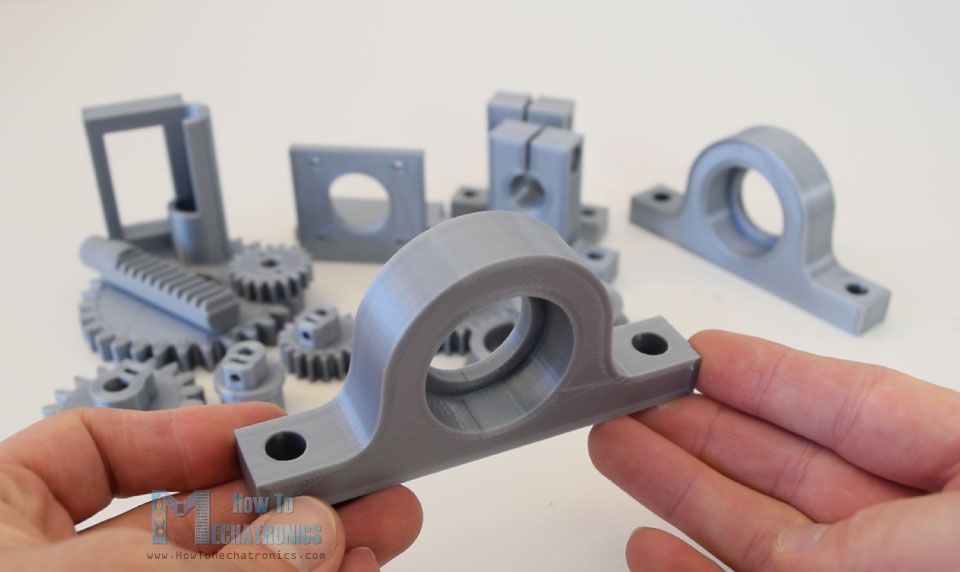 There is no need for prototypes to be moved from factory to factory to complete the process. This makes 3D printing an industry that can be created around the world without leaving a trace. Thus, there is a reduction in sea, air and road transport.
There is no need for prototypes to be moved from factory to factory to complete the process. This makes 3D printing an industry that can be created around the world without leaving a trace. Thus, there is a reduction in sea, air and road transport.
2. Less waste.
The traditional manufacturing process is basically a subtractive process in which raw materials are lost and reused over and over again, resulting in high costs and waste. The advantage of 3D printing is a unique way of creating a product with minimal waste, the so-called additive manufacturing. While more traditional methods involve waste that can be reused or recycled, it still takes time and effort to determine how and when this waste will be used. High volume 3D printers do it themselves.
Thermoplastic materials, for example, can be melted, solidified (cooled to become solid), melted again, solidified again, and so on. Thus, production "waste" can be reused.
3. Time Reduction
We live in a rapidly changing world where everything is for yesterday and this is where 3D printing can really make a difference.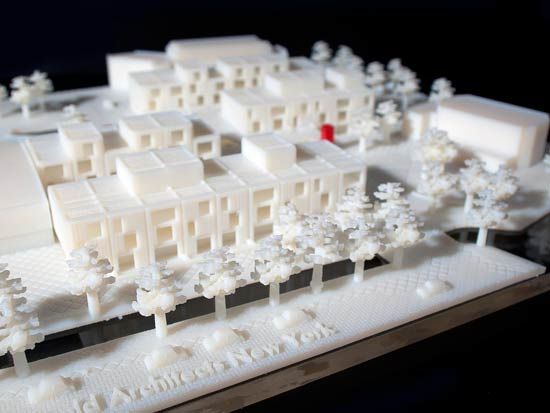 One of the big advantages is that parts and products can be produced much faster than using traditional methods. Complex designs can be created as a CAD model and then turned into reality in just a few hours. This embodies design ideas in a way that can be quickly tested and developed in a short amount of time. Whereas traditional methods can take weeks or months to get from design to prototype to production.
One of the big advantages is that parts and products can be produced much faster than using traditional methods. Complex designs can be created as a CAD model and then turned into reality in just a few hours. This embodies design ideas in a way that can be quickly tested and developed in a short amount of time. Whereas traditional methods can take weeks or months to get from design to prototype to production.
4. Competitive advantage
Businesses can create better, better, and more advanced products in a shorter amount of time, which provides a competitive advantage. It also allows you to develop products at an early stage, prototyping faster, which means the product will be invented, ready for production and market sooner. The ability to create a life-size prototype allows designers to think differently about the products they are developing.
The product is often left to the imagination. This increases the risk of losing information somewhere during the connection, which at some point can lead to serious problems.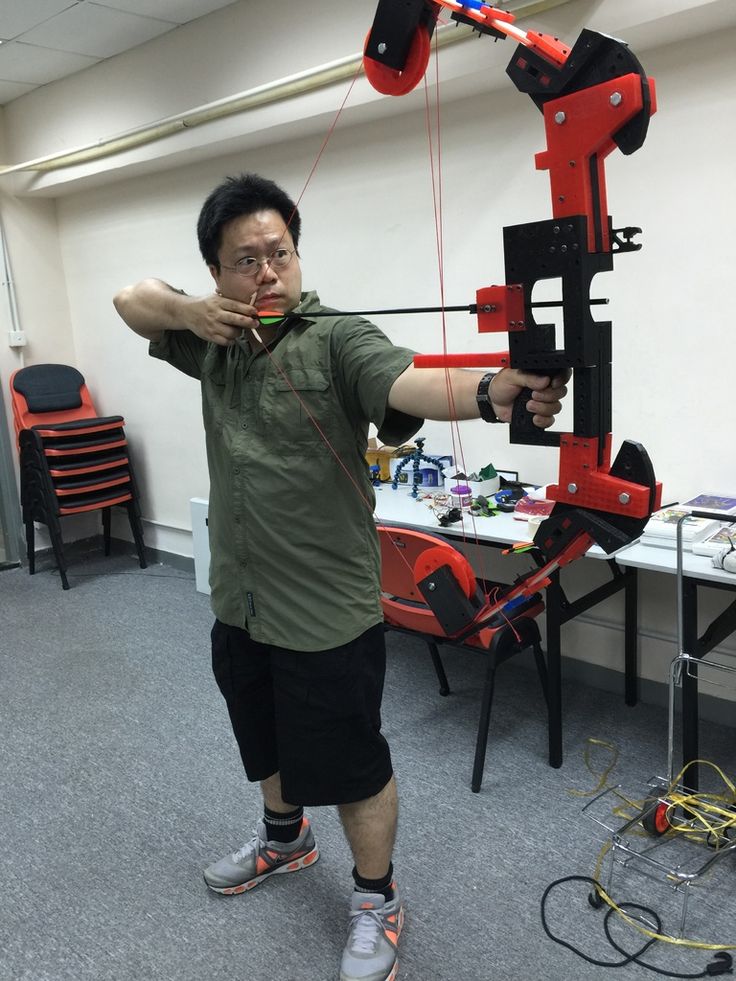 It is this natural value that will make it possible to speak with your partners, investors and clients in the same language. After all, you can not only talk about a product that will be produced in some time on the other side of the world, but also touch it. The probability that the produced product will not be able to satisfy the needs and agreements, will be expensive is quite high, which means it should be described as best as possible from the very beginning. One of the benefits of 3D printing is that it allows you to quickly create a concept that people can physically hold in their hands, eliminating any fear or misunderstanding. While this may only be a prototype and still open to change, it does at least give an idea of what the end result will look like, offering a more accurate representation than a description.
It is this natural value that will make it possible to speak with your partners, investors and clients in the same language. After all, you can not only talk about a product that will be produced in some time on the other side of the world, but also touch it. The probability that the produced product will not be able to satisfy the needs and agreements, will be expensive is quite high, which means it should be described as best as possible from the very beginning. One of the benefits of 3D printing is that it allows you to quickly create a concept that people can physically hold in their hands, eliminating any fear or misunderstanding. While this may only be a prototype and still open to change, it does at least give an idea of what the end result will look like, offering a more accurate representation than a description.
Test the market
Understanding whether a model will succeed requires a lot of research, especially when it comes to traditional production methods.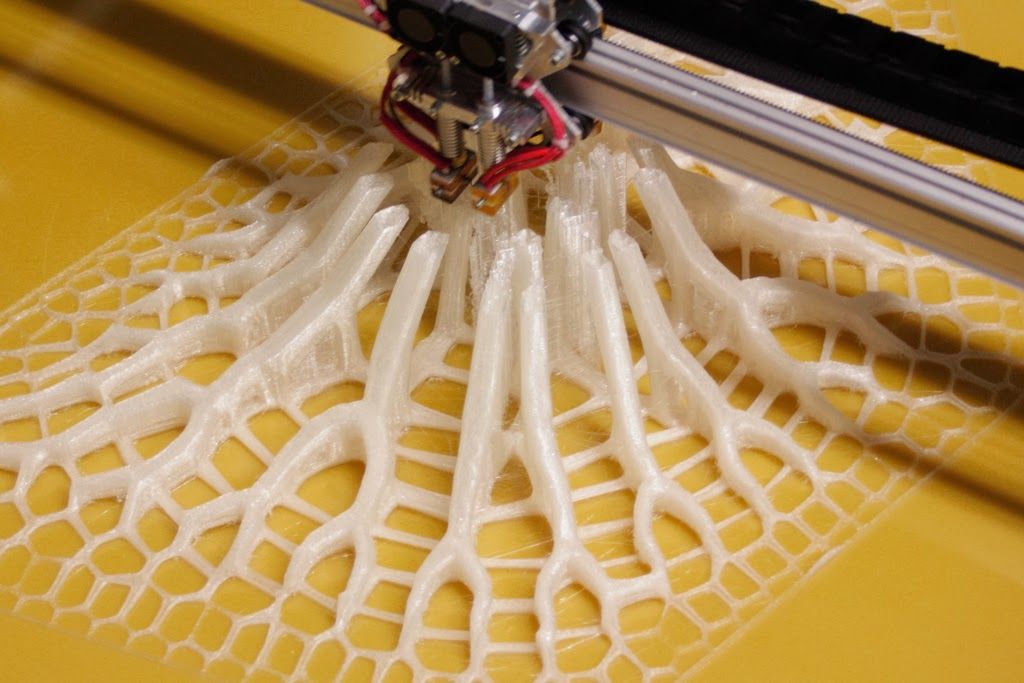 However, prototyping with 3D printing will allow businesses to get feedback from potential buyers and investors like never before. The product can be customized and changed right up to the very last minute, which traditional production methods do not offer. This means that 3D printing offers a unique and valuable way to determine if a product has the potential to go to market and be successful at the same time.
However, prototyping with 3D printing will allow businesses to get feedback from potential buyers and investors like never before. The product can be customized and changed right up to the very last minute, which traditional production methods do not offer. This means that 3D printing offers a unique and valuable way to determine if a product has the potential to go to market and be successful at the same time.
5. Error reduction
When it comes to designing parts and products, designers must consider efficiency. The production of many parts and products requires a large number of steps using traditional production methods. Therefore, each step can lead to an error with the risk of restart, which will lead to problems with the overall production process. A one-step manufacturing process is more advantageous.
There are many industries that have a long and drawn out production process. Where some of the steps are to create a CAD model and then develop a prototype which may require adjustments before it is finally sent to final production.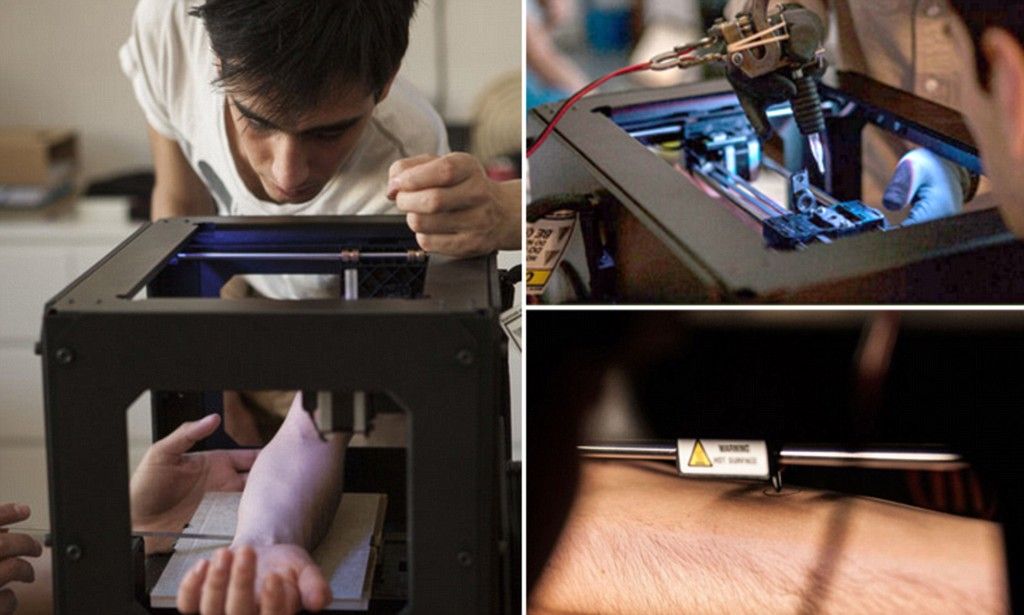 This is a process that takes a lot of time, and none of the steps can be skipped, since they all play a role in the production process. However, one of the advantages of 3D printing is that it creates a product in one step, without interaction with operators during this process. You just need to finalize the design and upload it to the printer. This eliminates dependency on a range of manufacturing processes and enhances control over the final product.
This is a process that takes a lot of time, and none of the steps can be skipped, since they all play a role in the production process. However, one of the advantages of 3D printing is that it creates a product in one step, without interaction with operators during this process. You just need to finalize the design and upload it to the printer. This eliminates dependency on a range of manufacturing processes and enhances control over the final product.
In the traditional manufacturing process, failed prototypes cost time and money. With every wrong prototype you have to go back to the drawing board and there is no guarantee that it will be right the second time around. Even small adjustments have a significant financial and time impact on the entire process. This is where 3D printing can eliminate risk, as designs can be tested by creating a production-ready prototype before proceeding to final creation. This helps build confidence in the design before investment is made and extra money is paid out to take it to the next level of mass market production.
6. Privacy
Continuous prototyping and production on our own 3D printer ensures that designs never leave the company's premises, protecting your intellectual property. No third parties can ever claim your innovations. Every innovative design is kept in-house, so you don't have to worry about privacy anymore.
7. Custom Made
The freedom to design is one of the great benefits of 3D printing. Because 3D printing is ideal for one-off production and the creation of individual parts in a single process, this means you can take advantage of the opportunity for customization. Therefore, many industries such as medicine and dentistry are using 3D printing and design because of the ability to create customized implants and aids. In fact, sports equipment can be created specifically for athletes, and thus individual details can be created in a way that has never been done before.
Traditional methods relied on shapes and cutting, making the tuning process very labor intensive.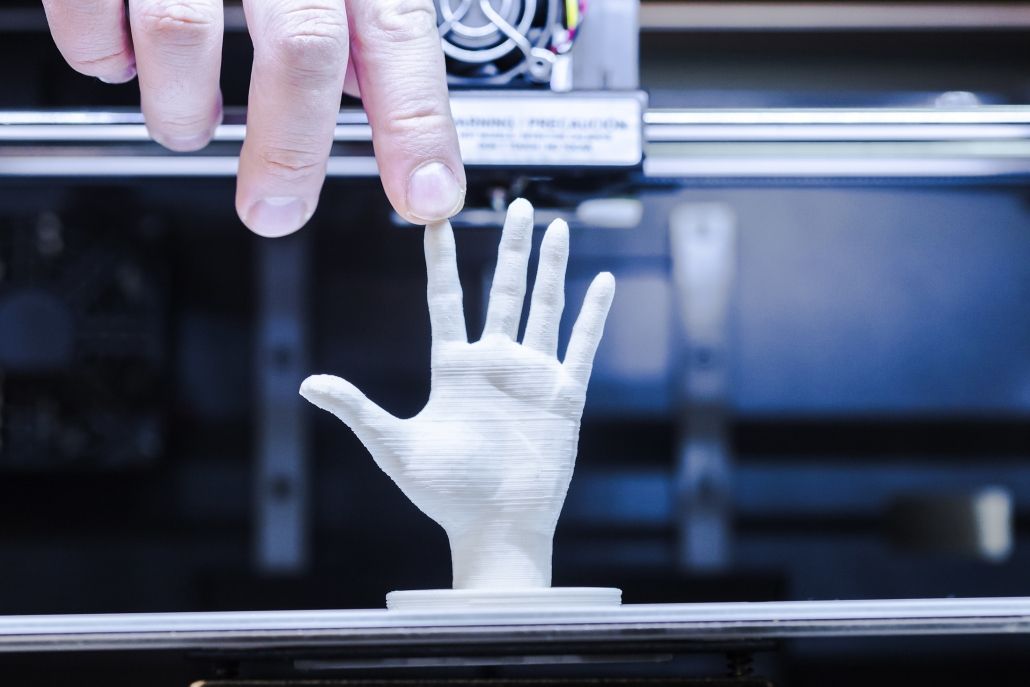 In contrast, customizing 3D printed products can have improved structural integrity, make complex changes, and change parts to meet specific requirements. This setup gives 3D printing endless possibilities.
In contrast, customizing 3D printed products can have improved structural integrity, make complex changes, and change parts to meet specific requirements. This setup gives 3D printing endless possibilities.
Disadvantages of 3D printing:
1. Initial cost of the printer
You need to buy a 3D printer, and even though the return on investment will be fast and high, the initial investment must be made.
2. Post-processing
A 3D printed object in most cases requires some post-processing.
3. Print time
When it comes to producing many objects, 3D printers are slow compared to other manufacturing technologies. Aside from mass production, another disadvantage is the long print times for single prints. Depending on the size and quality of the printer, printing can take anywhere from a few hours to a few days, but if the printer fails when it's almost finished printing, you'll have to start over. However, by making sure the 3D model and print file are well designed and cut, and the printer is set up correctly, you can almost guarantee that the print will be perfect.
4. Special skills are required to work with 3D models.
Once you have purchased a printer, you must learn how to create and modify 3D models. 3D modeling is a skill that takes a lot of time and effort to fully master, a process of trial and error. But once you learn how to use the program, you can print whatever comes to your mind.
5. Job Loss in Manufacturing
As we mentioned in the Benefits of 3D Printing, this technology allows you to create product designs and prototypes in a matter of hours because it only takes one step. This eliminates many steps that are used in traditional manufacturing. Due to this, no large labor costs are required. Thus, the introduction of 3D printing can lead to a reduction in manufacturing jobs. For countries that rely on large numbers of low-skill jobs, job cuts in manufacturing can have a big impact on the economy. However, it is likely that robotics will have a much greater impact here.
Conclusion
For any business, their customers are the key to success, so customer satisfaction becomes an important part of their strategy. By staying ahead of the competition and giving customers what they want, industrial 3D printers have changed the way businesses deliver exactly what they need. Customer expectations have changed because they want to receive goods quickly and efficiently.
By staying ahead of the competition and giving customers what they want, industrial 3D printers have changed the way businesses deliver exactly what they need. Customer expectations have changed because they want to receive goods quickly and efficiently.
The benefits of 3D printing are wide and varied. Many industries are starting to incorporate 3D printing into their processes in an attempt to capitalize on the technology in a variety of ways. This is a technology that has grown significantly in recent years and will continue to grow as it continues to improve on what it has to offer. When you consider all the advantages of 3D printing, it becomes obvious that it will soon become a technology that will overtake traditional methods. It's just a matter of time.
It is the ability to print complex shapes and interlocking parts without the need for any assembly that makes 3D printing so unique. It is possible to create small complex shapes at very low cost and in a short amount of time. The ability to design and manufacture objects of various shapes without the need for special tools provides businesses with a higher level of flexibility when it comes to manufacturing and helps reduce costs. The strength of 3D printing is that it promotes innovation and is ideal for on-demand customization. This gives businesses the ability to design and build products like never before. A process that allows the imagination to be free because there are almost no boundaries. It can bring old designs back to life for a number of industries where parts are obsolete.
The ability to design and manufacture objects of various shapes without the need for special tools provides businesses with a higher level of flexibility when it comes to manufacturing and helps reduce costs. The strength of 3D printing is that it promotes innovation and is ideal for on-demand customization. This gives businesses the ability to design and build products like never before. A process that allows the imagination to be free because there are almost no boundaries. It can bring old designs back to life for a number of industries where parts are obsolete.
3D printing is a rapidly growing industry with great potential for the future. We have just begun to understand how 3D printed objects can make our lives easier, more convenient, safer and healthier. And because 3D printing is advancing as fast as people can come up with new designs to print, it may not be long before we live in a world where you can 3D print your lunch, a tailored shirt, or repair parts. everyday items.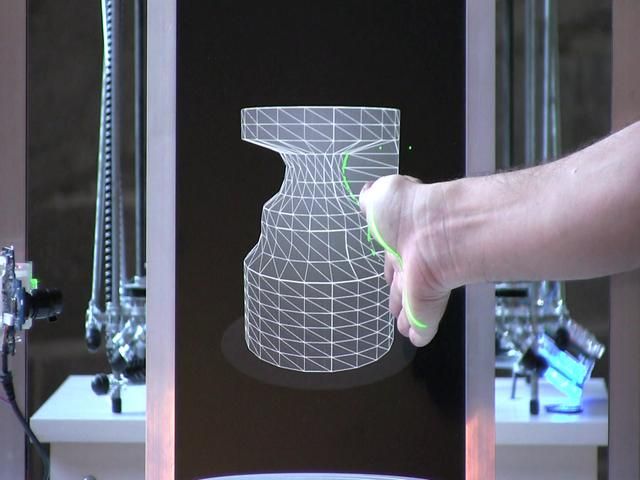 all without leaving your own home.
all without leaving your own home.
The Fialan team will help you realize your wildest projects and ideas.
Regardless of the scale and specification - the savings in purchasing in China not only a 3D printer, but also equipment for such niches as medicine, CNC, cafes and bars, warehouse equipment and many others will cost you up to 30% cheaper compared to the domestic market.
You can learn more about profitability and get professional advice at the link: equipment for business.
Also call +38 (044) 290‑76‑11
Which 3D printer to choose for business
3D printed business models
3D printing is making its way into more and more areas of life these days. At the same time, the demand for 3D printing remains at a high level and the demand for products produced by additive methods is constantly higher than the supply. In a situation of such a shortage, a far-sighted businessman decides to enter this market in order to earn money by satisfying this request.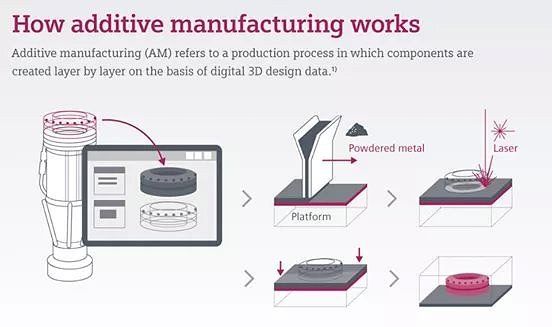
For new players in the 3D printing market, the choice of niche is closely related to the choice of technology, technique, and, sometimes, even specific models of 3D printers.
It is important that we are talking about business - a sphere of life in which everything can be found at a price expressed in the amount of money, which means that there are general requirements that apply to equipment. Maximum reliability allows you not to spend on repairs, which means it is worth the investment. The presence of all certificates for the equipment is required by the state from the business. The maximum level of after-sales service allows the entrepreneur not to learn 3D printing, but simply to do the business for which he created his business. The cost of the 3D printer itself is not decisive in choosing a particular machine; in various areas, the payback period for investing in such equipment can be both short and almost instantaneous.
In general, there are several models for using a 3D printer for profit.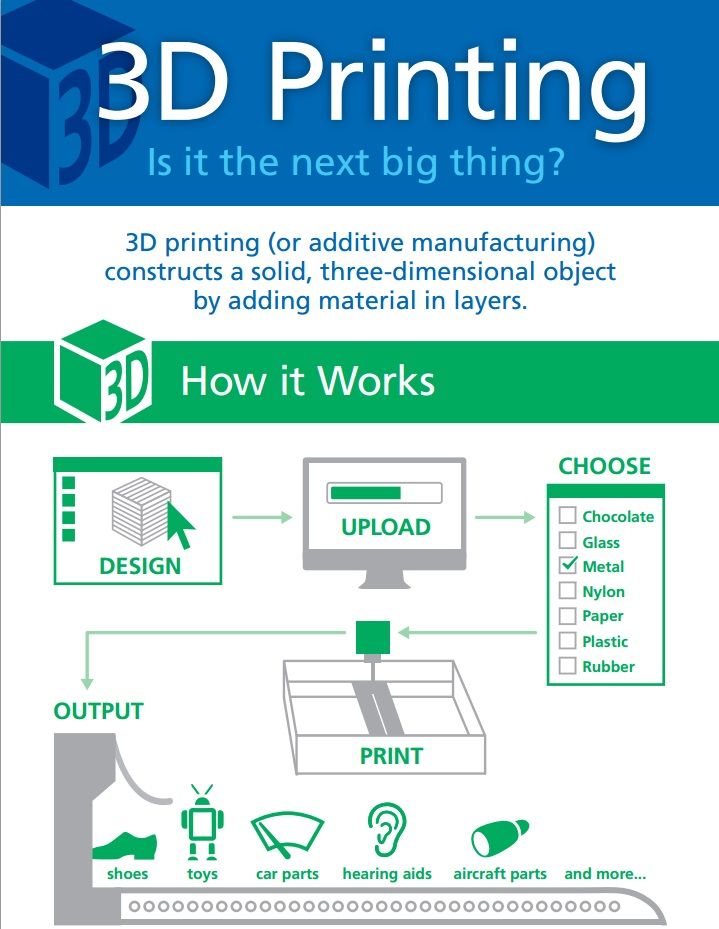
-
The company is introducing 3D printing to help existing processes.
-
The company switches to the production of a product using additive technologies
-
And there are companies that deal exclusively with printing, and the very idea of their business and their product is tied to additive technologies.
Let's see what 3D printing technologies are used in different models of companies on the market, as well as how to choose the right 3D printer for the business in your chosen niche!
3D printer for business
Modernization of existing business and technical processes is the key to the success of any enterprise. Not surprisingly, with the advent of new technologies, production strategies can be revised and even radically changed.
With the cost of additive technologies becoming cheaper, more and more enterprises are looking for ways to optimize their production using 3D printing.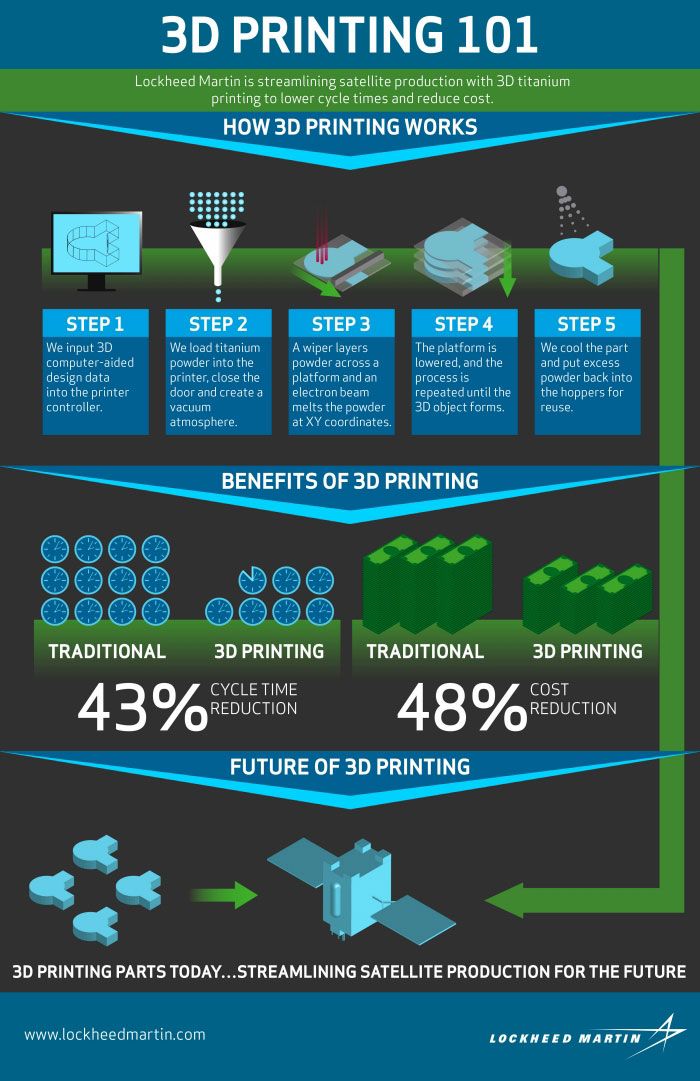 Sometimes, the optimization process leads to quite interesting results.
Sometimes, the optimization process leads to quite interesting results.
3D printing in production
Machine production is a method that allows you to get the most profit, and therefore the most interesting from a business point of view. Production line machines require constant maintenance and regular replacement of worn out parts. Usually, the process of replacing a part when it breaks down is as follows - a service employee localizes the malfunction, diagnoses the cause of the failure of a particular part, and orders a new part from the manufacturer according to the catalog. It’s good if the supplier has such spare parts in stock, but it happens that you have to wait until the spare part you need is produced.
From the moment of ordering to receipt, it can take from a week to months. All this time the machine is idle, and in our time of widespread use of conveyor chains, this can mean idleness of the whole chain of machines. Moreover, for some machine tools, spare parts cannot be obtained in principle - they can be discontinued, and sometimes it turns out that the company - the manufacturer of the machine has already gone bankrupt and there will be no new parts for the existing machine in principle.
Possible production losses in this case can reach amounts comparable to the value of the enterprise.
But what if the part you need can be obtained without ordering it from the machine manufacturer? The increase in the availability of 3D printing has led more manufacturers to create 3D printing departments based on their service departments. Such a department consists of several 3D modelers, several 3D printers and several 3D printers.
Such 3D printers must meet several requirements - machine parts must be strong enough, the cost of maintaining a 3D printer fleet must be reasonable, and the 3D printer must be able to produce both the spare part itself and models to obtain parts using more expensive methods.
Such requests are met by 3D printers using FDM and LCD technology.
Picaso 3D Designer X Pro
One of the bestsellers in this category is the Picaso 3D Designer X Pro printer. The defining advantages here are the omnivorousness of this model - you can print both ABS, PLA, PETG, Flex, Nylon, as well as more specific and composite plastics - and the ability to print simultaneously with two materials.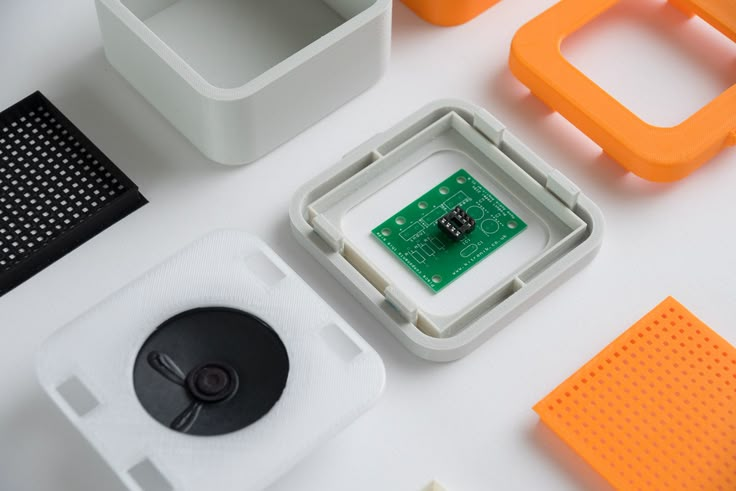
Phrozen Transform Standard
Phrozen Transform Standard is also a good choice. Huge build area - 292x165x400 mm, print speed up to 10mm/hour and high-intensity ParaLED system allow this printer to quickly and accurately print parts, including those from specific polymers.
Architectural 3D printing
In architecture, the ability to present a material model of the proposed project to the customer is of great importance. There is little to promote acceptance; a positive decision, such as the opportunity to inspect and feel live at least a model of a building or apartment. For the production of such models in architectural bureaus and studios, there are large departments. A few years ago, next to the powerful computers of architects, there were workshops for the manual production of models from papier-mâché and other materials that are little associated with modern technology;
Affordable 3D printing has taken the manufacturability of the production of architectural models to a whole new level! Moreover, it turned out to be extremely simple to integrate 3D printing technologies into the work of an architectural bureau - engineers in this direction have already specialized in working with one or another software product related to the creation of 3D models, it only remained to bring this work to its logical conclusion - a layout.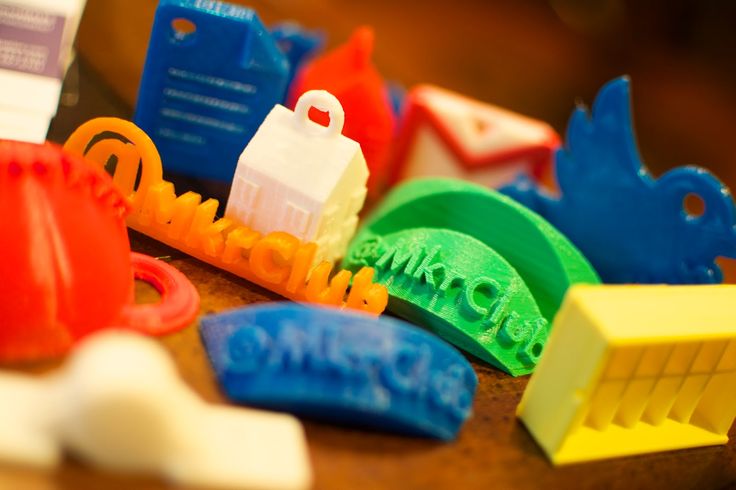
The requirements for 3D printers for architectural offices are primarily related to the ability to produce large layouts. Strength here is not as important as the ability to convey the characteristic features of the project as accurately as possible - after all, the layout is a reduced copy, which means all the details will be tiny. These requirements are met by FDM 3D printers.
Raise3D Pro2 Plus
A good choice for an architecture studio is the Raise3D Pro2 Plus 3D printer. A large construction area, coupled with precision, through the use of high-quality components and optimal kinematics, allow you to carry out large-scale projects. The ability to print with two materials at the same time makes the implementation of projects easier and allows you to simplify the post-processing of finished models.
BigRep Studio
For particularly demanding architects, BigRep Studio will be a pleasure to work with. Resume printing from the same place after a power outage, remote control and print management make it possible to install this truly large machine in its dedicated room.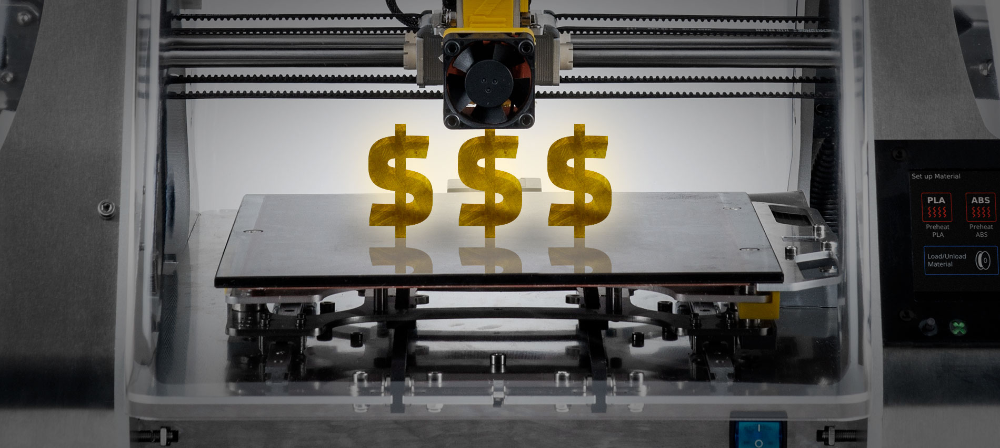 Well, if necessary, put it in the office, it will pass through the door, since the manufacturer provides the opportunity to disassemble it into 2 halves.
Well, if necessary, put it in the office, it will pass through the door, since the manufacturer provides the opportunity to disassemble it into 2 halves.
Advertising and exhibitions
The advertising business is probably one of the most demanding of novelty. The new attracts attention, and that's what advertisers do. The media that conveys the advertising message is of high importance. Today, any new way to attract a potential client is in demand.
A special area of this business is the organization of stands for exhibitions and similar events. It often happens that there is very little time to implement an idea, and success is achieved due to the possibility of implementing the maximum range of such ideas.
So in advertising, 3D printing is in demand in a huge number of its manifestations. Here the creation of handouts, and layouts of future projects, and noticeable signs of pylons and posters. Different 3D printing methods are suitable for different areas of the advertising business, FDM and LCD are very much in demand. One of the fastest growing areas of advertising using 3D printing is signage. A 3D printer creates an almost finished product - all that remains is to connect the backlight and electronics. This allows, firstly, to implement ideas that are too costly to implement by other methods, and secondly, to significantly simplify the tailor made approach to the customer - each customer wants his own, unique sign. The requirements for such equipment are special. The size is of course very important, the sign must be highly visible, which means the print area must be suitable - wide and long, but not too high. Printing speed is more important than quality, you can't see small inaccuracies from a distance. Signs are most often placed on the street, which means that it is important that the products are resistant to use in different weather conditions, which means that it is necessary to be able to print with suitable plastics.
One of the fastest growing areas of advertising using 3D printing is signage. A 3D printer creates an almost finished product - all that remains is to connect the backlight and electronics. This allows, firstly, to implement ideas that are too costly to implement by other methods, and secondly, to significantly simplify the tailor made approach to the customer - each customer wants his own, unique sign. The requirements for such equipment are special. The size is of course very important, the sign must be highly visible, which means the print area must be suitable - wide and long, but not too high. Printing speed is more important than quality, you can't see small inaccuracies from a distance. Signs are most often placed on the street, which means that it is important that the products are resistant to use in different weather conditions, which means that it is necessary to be able to print with suitable plastics.
Flashforge AD1 Channel Letter
The Flashforge AD1 Channel Letter 3D printer is perfect for solving such problems.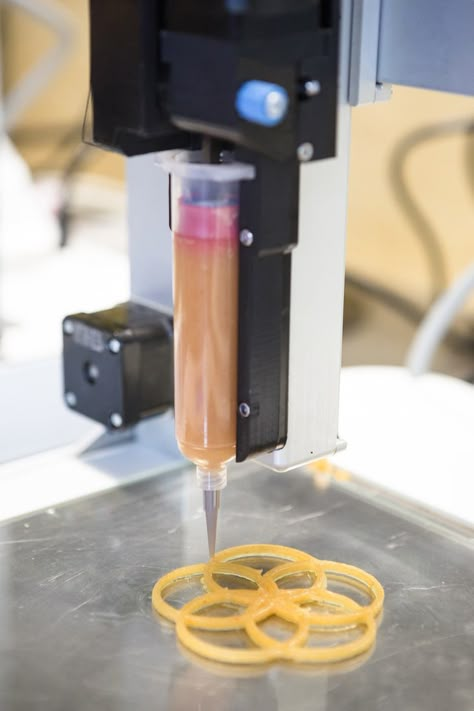 Its huge printable area allows you to print signs that will be visible from a great distance. The high-speed extrusion system will make this process relatively fast, and the ability to print in multiple colors makes the need for post-processing much lower. The use of such a machine allows not only to meet the requirements of the most fastidious customers, but also to significantly reduce the cost of production.
Its huge printable area allows you to print signs that will be visible from a great distance. The high-speed extrusion system will make this process relatively fast, and the ability to print in multiple colors makes the need for post-processing much lower. The use of such a machine allows not only to meet the requirements of the most fastidious customers, but also to significantly reduce the cost of production.
Jewelry 3D Printer
Since ancient times, jewelry has been considered one of the most profitable. The history of jewelry creation dates back many centuries and goes back to the time of the birth of the Homo Sapiens species. Many techniques in this area of production have been preserved for decades, and are in many ways an art. But even in this area, we see that additive technologies help to realize more and more projects and ideas.
The meaning of the word “jewelry” itself is associated with miniature, precision and painstaking work. A lot of time and effort is spent on creating each piece of jewelry, which as a result can easily turn out to be a masterpiece of art. 3D printing helps to facilitate the production of highly detailed blanks, making the work of the craftsman easier. Most often, models are printed, according to which such semi-finished products are subsequently smelted. The achievements of modern technologies bring their quality to the level of an almost finished product. For this, of course, the SLA 3D printing method is used - with its help you can create the most detailed models. The requirements for such 3D printers are related to the maximum resolution of finished models, as well as the ability to use materials created for subsequent transformation into metal, for example, by direct casting.
3D printing helps to facilitate the production of highly detailed blanks, making the work of the craftsman easier. Most often, models are printed, according to which such semi-finished products are subsequently smelted. The achievements of modern technologies bring their quality to the level of an almost finished product. For this, of course, the SLA 3D printing method is used - with its help you can create the most detailed models. The requirements for such 3D printers are related to the maximum resolution of finished models, as well as the ability to use materials created for subsequent transformation into metal, for example, by direct casting.
Phrozen Sonic XL 4K
A good example of a suitable 3D printer for jewelry is the Phrozen Sonic XL 4K LCD technology. The maximum resolution of 4K allows you to create the most detailed models, and the ParaLED system significantly reduces the time of their production.
Phrozen Sonic Mighty 4K
For workshops dealing with more miniature production, the Phrozen Sonic Mighty 4K may be sufficient. Although the build area is smaller and the ergonomics of the machine are not as well thought out, this printer performs well enough to be a rational choice when looking for a 3D printer for a small workshop.
Although the build area is smaller and the ergonomics of the machine are not as well thought out, this printer performs well enough to be a rational choice when looking for a 3D printer for a small workshop.
Sculpture
A striking example of a paradigm shift in production in our time is sculpture. Many people remember the saying of the great Michelangelo Buonarroti “I take a stone and cut off all that is superfluous.” How exactly the master defines the fundamental principle of subtractive technologies! Modern developments help to make the process of creating masterpieces more connected with working with the head than with the hands.
In our time, the sculptor has the opportunity not only to work with material objects, but to almost completely rid himself of such work. A chisel and hammer can replace a computer and a 3D printer. The requirements for the machine in this bundle are mainly related to the area of \u200b\u200bconstruction - sculptures can often be large. There is also a need for printing with different materials to implement projects that are complex in terms of 3D printing. It is important that the finished model can be processed by classical methods. Suitable 3D printing methods are FDM and SLA.
There is also a need for printing with different materials to implement projects that are complex in terms of 3D printing. It is important that the finished model can be processed by classical methods. Suitable 3D printing methods are FDM and SLA.
CreatBot D600 Pro
The CreateBot D600 Pro 3D printer becomes a frequent inhabitant of the studios of successful architects. A huge build area, the ability to print with two materials at the same time make this machine ready for the implementation of projects of increased complexity. The presence of a special table cover, as well as a special compartment for drying plastics, makes the process as comfortable as possible and does not require extra space.
Peopoly Phenom XXL
For more detailed sculpting tasks, it will be useful to look at the Peopoly Phenom XXL 3D printer. The gigantic build area, coupled with the use of MSLA technology, makes this machine stand out from other printers in this price range.
Business converted to use a 3D printer
There are several periods of the so-called “breakthrough development of production” in history. One of the last can be called the Great Industrial Revolution in England. This revolution was made possible and resulted from the invention of a new method of production - production with an improved steam engine. Living during even such a revolution, it is difficult to realize the significance of a single invention or new technology for future generations. But even these difficulties do not prevent us from reasonably calling modern additive manufacturing methods revolutionary, of great importance, and changing entire business sectors.
Today we see a huge number of companies that, while remaining fundamentally in the same area, are changing the entire production line of their product, based on the new opportunities that 3D printing provides.
Dental 3D printers
For me personally, going to the dentist is always stressful. Despite the fact that in our time, sitting in the dentist's chair and not feel real negative sensations, memories of visits to doctors in childhood encourage us to think less about the existence of problems with teeth. Perhaps you do the same. It is also possible that for this reason, you, like me, do not notice strong changes in this area of \u200b\u200bmedicine. And they are really huge and, in my opinion, even a little magical.
Despite the fact that in our time, sitting in the dentist's chair and not feel real negative sensations, memories of visits to doctors in childhood encourage us to think less about the existence of problems with teeth. Perhaps you do the same. It is also possible that for this reason, you, like me, do not notice strong changes in this area of \u200b\u200bmedicine. And they are really huge and, in my opinion, even a little magical.
Modern technologies have made it possible to change the correction of such a frequent feature of dental clinic clients as malocclusion. In the days before 3D printing, overbite was corrected with braces or braces. This process was very pleasant, required a lot of attention from the client, and also forced to replace the usual tools, such as a toothbrush, with specific and inconvenient ones. For many, wearing braces was also unpleasant from an aesthetic point of view.
Why did people make such sacrifices? A metal brace attached to the teeth puts pressure on them in a certain direction, forcing them to shift towards the medically correct position.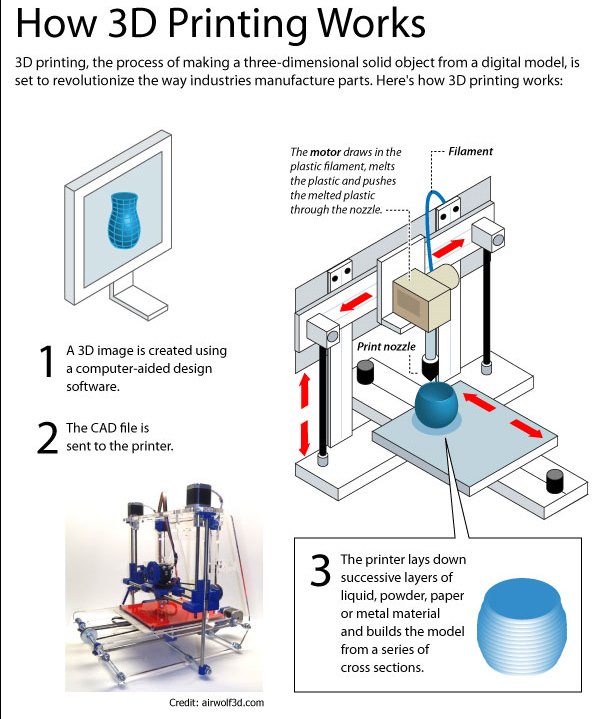 After a few months of wearing, the braces literally push the teeth where the dentist has determined.
After a few months of wearing, the braces literally push the teeth where the dentist has determined.
This is what the aligners look like
3D printing has changed the approach to the process itself so much that a patient undergoing a course of bite changes practically does not change his habits and lifestyle! This technology is called aligners (from the English allign, align). Now the dentist takes a 3D map of your teeth, a special program calculates the necessary changes and creates 3D images of special onlays for teeth, which are subsequently cast from special materials according to 3D printed models. The patient puts on such linings before going to bed and takes them off in the morning. The accuracy of manufacturing is so high that it allows the maximum dosage of pressure on certain teeth, forcing them to move into place in the most natural and imperceptible way. The absence of the need to specially maintain such pads, the invisibility of the process to others, and the comfort make this technique very popular. The purchase of what kind of 3D printers will allow you to enter the dental services market? The main requirement is medical neutrality, the machine itself, plastics, production quality must be such that use in medical institutions is justified. An important issue is the availability of the necessary specific certificates. Mandatory ability to produce high-precision models.
The purchase of what kind of 3D printers will allow you to enter the dental services market? The main requirement is medical neutrality, the machine itself, plastics, production quality must be such that use in medical institutions is justified. An important issue is the availability of the necessary specific certificates. Mandatory ability to produce high-precision models.
One of the leading printer manufacturers for this market segment is Formlabs.
Formlabs Form 3
The Formlabs Form 3 3D printer allows you to create high-quality models using a wide range of plastics. Particular attention to issues related to the possibility of using printers from this company in medical institutions allows you to be sure of their safety. Ergonomics and ease of use make it possible to concentrate even more on the really important things - helping the patient.
Formlabs Form 3L
For dental clinics that have already increased their production volumes and the need for even more advanced equipment is clearly overdue, the Formlabs Form 3L 3D printer will be a rational choice.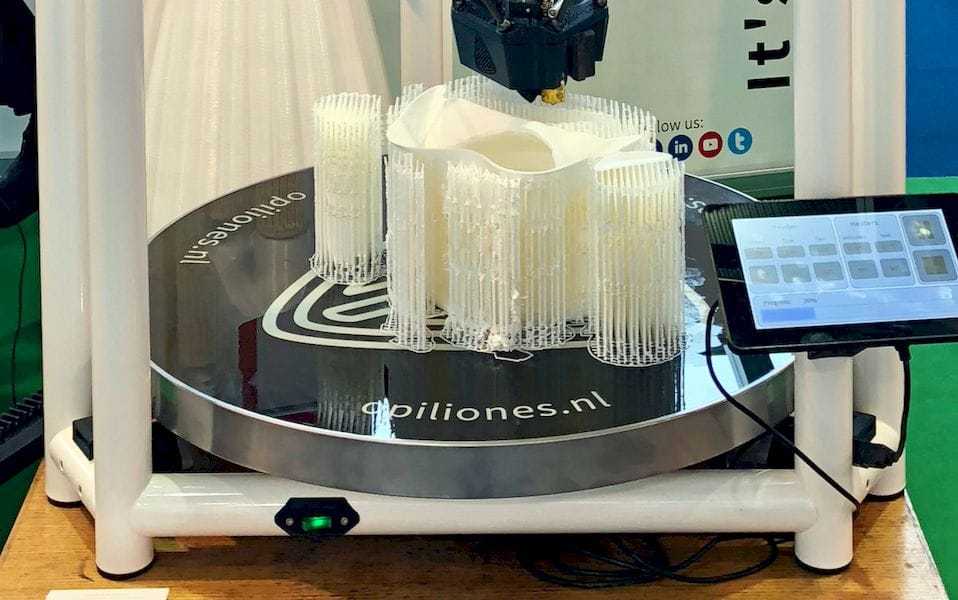 The advantages of this machine will not only be an increased build area, but also closed-loop calibration and simplified component replacement.
The advantages of this machine will not only be an increased build area, but also closed-loop calibration and simplified component replacement.
3D printing in modern orthotics
Will it be news to you that the left and right legs of each of us are of different lengths? And will it be news to you that this can affect your life much more than just complications with the choice of trousers? It turns out that the individual characteristics of a person associated with the length of the legs can be the cause of many diseases, including mental ones, such as depression. Orthopedists help to get rid of problems associated with the peculiarities of the bones, muscles and joints of the patient. Quite often, the healing technique of interaction is based on the principle that we discussed in the previous part of the article - gentle movement and maintenance of body parts in a medically correct place in the body. For example, if the disease is due to the fact that leaning on legs of different lengths, you have a curvature of the spine, the orthopedist prescribes insoles of different thicknesses for you, thereby leveling the difference in the length of your body supports. And here 3D printing helps a lot with its accuracy, and most importantly, the ability to manufacture to individual sizes. Basically, in this area of medicine, solutions based on FDM technology are used. Machines capable of printing with various plastics, including elastic and hypoallergenic, are required. The ability to print products immediately in pairs is welcome.
And here 3D printing helps a lot with its accuracy, and most importantly, the ability to manufacture to individual sizes. Basically, in this area of medicine, solutions based on FDM technology are used. Machines capable of printing with various plastics, including elastic and hypoallergenic, are required. The ability to print products immediately in pairs is welcome.
Raise3D E2
These requirements are met by the Raise3D E2 3D printer. Automatic printing of products in pairs, the ability to use elastic materials for printing, convenient operation, and a filter make this model a good choice for an orthopedic clinic.
Cosplay
Many of us love masquerades. Probably one of the most exaggerated ways to dress up is cosplay (from the English costume play - costume play). Changing clothes, applying make-up, using additional accessories, cosplayers sometimes become almost like a copy of the heroes of movies, cartoons or comics. And if a pipe and a bowler hat can be enough to become Commissioner Maigret, then in order to turn into Iron Man or Wonder Woman, you need to create many elements of the costume from scratch.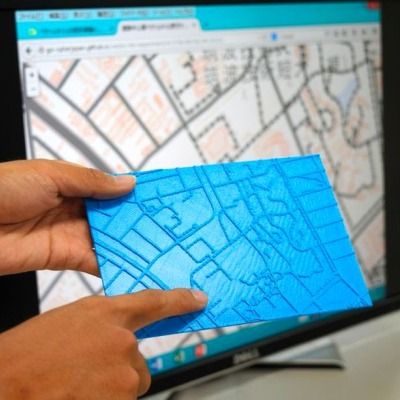 3D printing helps with this. Cosplayers create such impressive costumes on a 3D printer that it is very difficult to guess about the use of 3D printing in their production. At the same time, if earlier costumes were created mainly with the help of papier mache and similar technologies, today most of the cosplay costumes are made using additive technologies. FDM is more commonly used, but LCD methods are also in demand.
3D printing helps with this. Cosplayers create such impressive costumes on a 3D printer that it is very difficult to guess about the use of 3D printing in their production. At the same time, if earlier costumes were created mainly with the help of papier mache and similar technologies, today most of the cosplay costumes are made using additive technologies. FDM is more commonly used, but LCD methods are also in demand.
A cosplay 3D printer should be able to print large models as quickly as possible. Plastics used are different, but mostly inexpensive, accessible, and easy to process.
Anycubic Chiron
Cosplayers starting to print costume details often look at the Anycubic Chiron 3D printer. This is an inexpensive machine that allows you to print with affordable plastics and create models that fit into a large print area of 400x400x450mm. An additional advantage of the model is its high maintainability and unpretentiousness in maintenance.
Anycubic Photon Mono
To create accessories and details requiring more detail, purchase the Anycubic Photon Mono.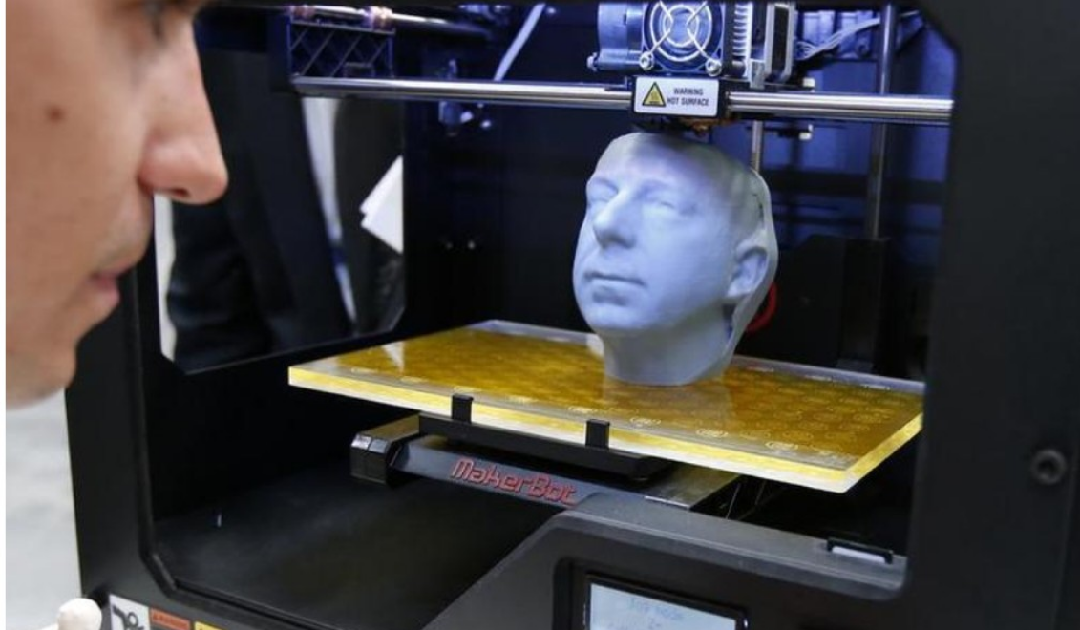 The main advantage of this machine, of course, is its price. At the same time, the print resolution, although it does not reach the height of professional models, is at a level more than sufficient for use in cosplay.
The main advantage of this machine, of course, is its price. At the same time, the print resolution, although it does not reach the height of professional models, is at a level more than sufficient for use in cosplay.
Pure 3D printing business
Speaking about the various niches in the market that have been created by new technological opportunities, one cannot fail to mention those companies whose business appeared as a result of the advent of 3D printing and cannot exist without it. It happens that such companies were initially engaged in something else, but then they saw the economic feasibility of switching to a new business model. There are many companies that were originally created and designed for entrepreneurship based on 3D printing. Due to the fact that additive technologies literally burst into all areas of our lives like an avalanche, it may seem that they are indistinguishable from the companies described in the previous parts of this article. Looking closely, you can see that they make a profit exclusively by doing 3D printing.
Prototyping
Personally, 3D printing has always seemed to me to be a way to create some kind of device or device parts. Moreover, it was important that if I made a mistake in calculations or taking measurements, I could always quickly correct the computer model and get a new version of the required component in the shortest possible time. Abroad for a long time, and now in our country, there are companies on the market that are engaged exclusively in the production of prototypes. Quite often it turns out that this is a subsidiary of some kind of laboratory or research center. Depending on the area in which these prototypes are used, 3D printing techniques and requirements for 3D printers can be different. Most often this is FDM printing, which must be accurate. A prototyping 3D printer should be easy to operate and maintain.
PICASO 3D Designer X
In our country, the PICASO 3D Designer X 3D printer is in great demand. The high printing accuracy of this printer is combined with a compact body with the ability to dry plastic in the process.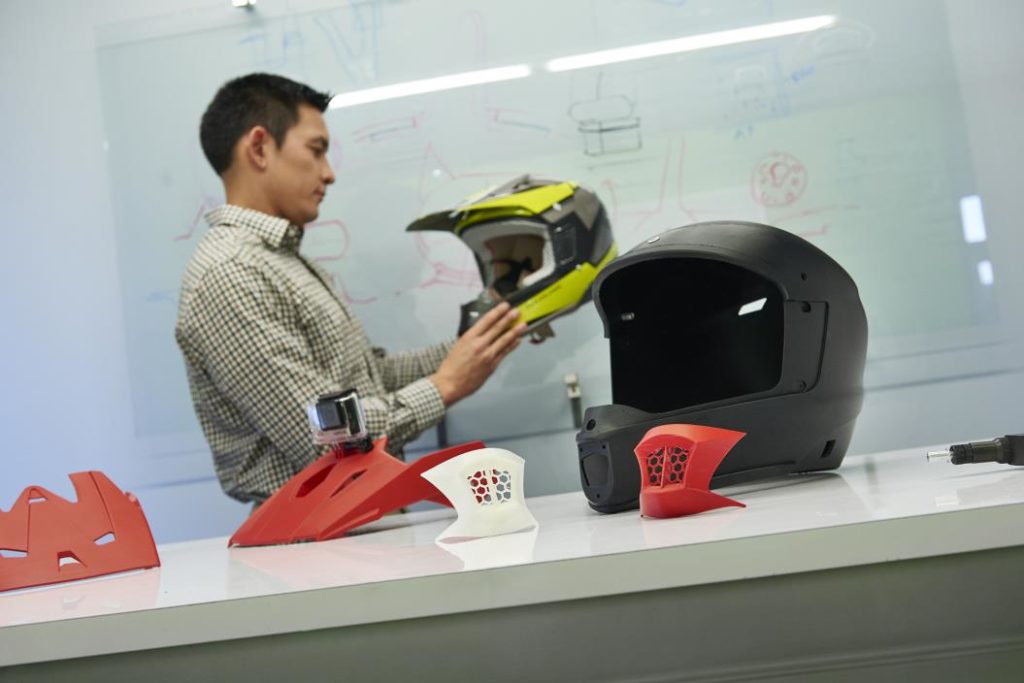 Working with various plastics is facilitated by the system of profiling print parameters for each plastic - if you don’t like how the model was printed, you can print it with another plastic without using a computer, it’s enough to have a profile for it. Ergonomics, ease of monitoring the printing process, a high degree of automation add significant advantages to the scales of this printer.
Working with various plastics is facilitated by the system of profiling print parameters for each plastic - if you don’t like how the model was printed, you can print it with another plastic without using a computer, it’s enough to have a profile for it. Ergonomics, ease of monitoring the printing process, a high degree of automation add significant advantages to the scales of this printer.
Flash Forge Finder
The FlashForge Finder 3D printer is used to create low-level prototypes and to teach the 3D printing process. Also, the low cost and bright appearance make this printer an attractive purchase for studios and circles, where children get acquainted with additive technologies.
Custom 3D printing
You can print on a 3D printer a huge, almost infinite number of types of things. And some of them need to be printed in one copy and that's it. Someone needs 3D printing not constantly, but not often or even very rarely. Custom 3D printing companies are helping to meet the needs of these potential customers. Usually a full service is provided - model development, 3D printing and processing. Often these companies have many 3D printers, and they are located in the same room. Such assemblies are called 3D printed trusses. The technologies that are presented on such farms are FDM and LCD. The fact is that the requirements for printers here are formed mainly in terms of the price of the printer, the cost of maintenance and reliability. For the fastest return on investment in a 3D-printed farm, inexpensive printers are purchased for it in batches - the more unification, the easier it is to work.
Usually a full service is provided - model development, 3D printing and processing. Often these companies have many 3D printers, and they are located in the same room. Such assemblies are called 3D printed trusses. The technologies that are presented on such farms are FDM and LCD. The fact is that the requirements for printers here are formed mainly in terms of the price of the printer, the cost of maintenance and reliability. For the fastest return on investment in a 3D-printed farm, inexpensive printers are purchased for it in batches - the more unification, the easier it is to work.
Creality3D Ender 3
The Creality3D Ender 3 3D printer holds the undisputed leader in terms of affordability/quality ratio in this market segment. Its cost, decent print quality, acceptable reliability and high maintainability make it possible to recoup investments in creating a farm based on such machines in the shortest possible time. Without a doubt, this is one of the best 3D printers for 3D printed farm!
Anycubic Photon Mono X
It is not uncommon for 3D printed trusses to purchase multiple Anycubic Photon Mono X 3D printers to enable collaboration with customers who require a radically different level of detail.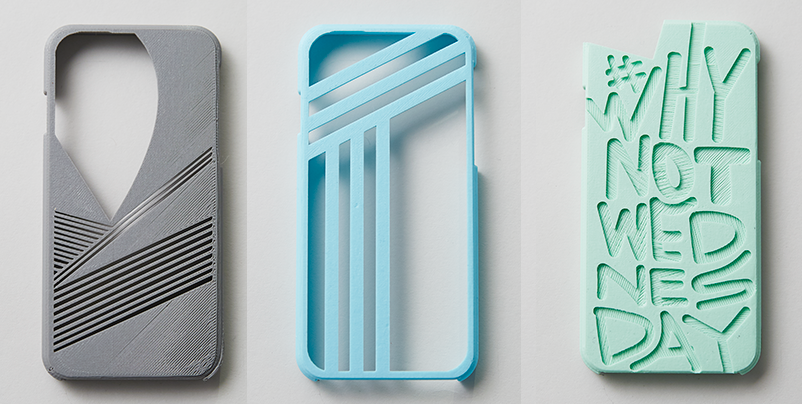 The reliable linear guides, high level of consumables unitization, and low maintenance seem to be a strong point. arguments in his favor.
The reliable linear guides, high level of consumables unitization, and low maintenance seem to be a strong point. arguments in his favor.
Multiple cases
It's always interesting to hear success stories. Let me give you a few real cases as an example.
3D printer - creator of scarce spare parts
There is an AUCHAN plant in the Tambov region. On the production lines of this enterprise, most of the machines are foreign. The machines use a huge amount of plastic parts, some of which are considered consumables and are ordered from the manufacturer with a margin.
In particular, there is a line for the production and processing of plastic containers. For the washing machine on this line, the plant regularly ordered washer nozzles in Europe.
One terrible day for the manufacturer, on another machine of this line, a plastic part failed, without which the line stood up. After contacting the supplier, it turned out that this particular part was out of stock. We would have to wait for a new delivery for at least 2 months, and during this time the line would be idle. In such a case, the production would suffer big losses.
We would have to wait for a new delivery for at least 2 months, and during this time the line would be idle. In such a case, the production would suffer big losses.
The management decided to turn to a 3D printing studio to urgently create a scarce part based on a failed one. The part was created in the shortest possible time, production resumed its work, although there was a loss, it turned out to be completely incomparable with what it could have been.
Seems like a success story. But it was not all success!
In the process of negotiations with the contractor, it turned out that it is possible to quickly produce a large range of parts for this line, in particular, washer nozzles. At the same time, with the same quality of parts, the cost of these consumables turned out to be much lower. Such production made it possible to abandon logistics costs, free up storage space, and the cost of the part itself turned out to be corny lower. As a result, prototypes were presented, and then finished parts.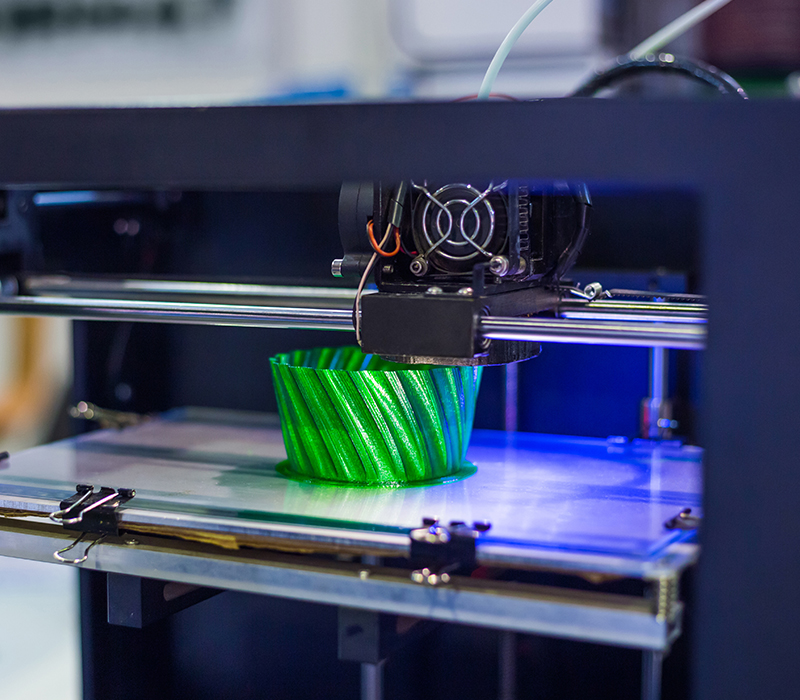 The company was incorporated into UK Bekar and now this small 3D printed farm is doing contracts on a full-time basis for a large manufacturer. Everyone was a winner!
The company was incorporated into UK Bekar and now this small 3D printed farm is doing contracts on a full-time basis for a large manufacturer. Everyone was a winner!
Legs of different lengths and what does 3D printing have to do with it
I had a terrible boss at one of my previous jobs. He always found fault with no reason, voiced conflicting demands, in general, it was uncomfortable to work, and I thought about quitting.
But I didn't quit, and here's why.
It turned out that the boss was such a radish simply because he was haunted by constant headaches. He went to different doctors, to no avail. He made a visit to the next doctor when I was just starting work in the company. It was a turning point, he went to the orthopedist. In Germany. There, in a few days, they determined that he had headaches from the fact that the pelvis was displaced. And the pelvis is displaced because one leg is longer. Special insoles were prescribed and produced right in the clinic.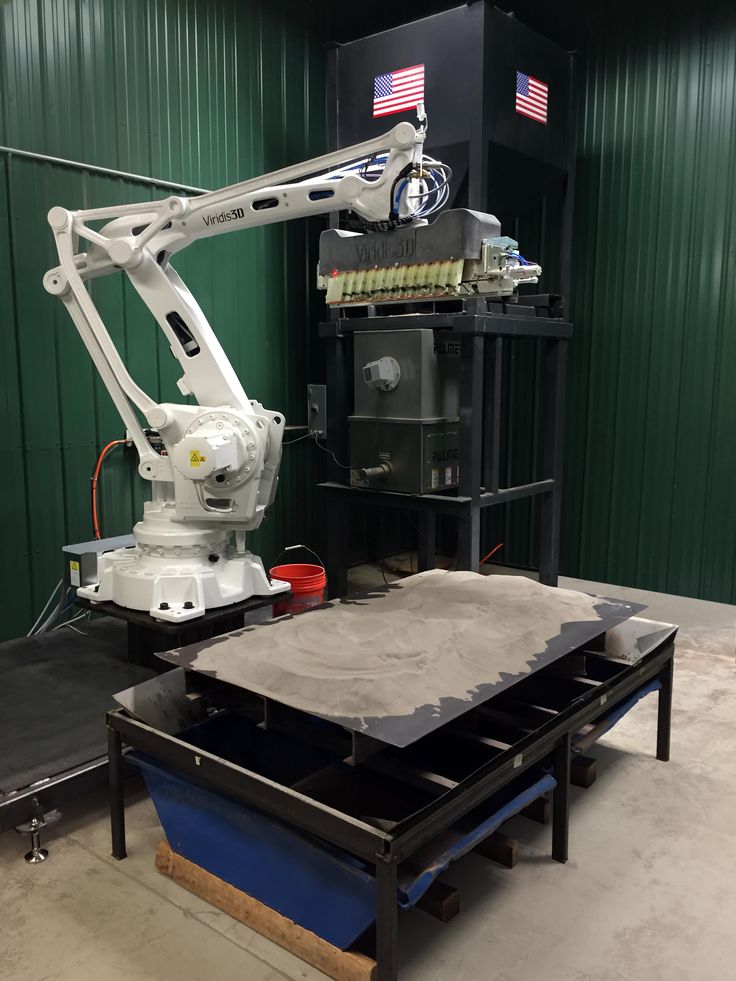
I remember that Thursday when he returned from his trip. I was shocked that he gave the bonus to our entire department, including me. Yes, and in person, it seemed that he had been replaced. Completely different, better person!
This story led him to invest in the creation of a laboratory for the production of such insoles in Russia based on the existing center of orthopedics. So to speak, I bought myself personal manufacturers of insoles. On this technological base, it was possible to produce, among other things, shoes designed taking into account the individual characteristics of the customer's foot. Subsequently, he sold this business, some of the specialists work in the Perseus Ortho center.
How the desire to help his wife turned into a business
And finally, a description of the case in which I took a personal part.
Alexander is my neighbor. Worked in a company that was engaged in deliveries abroad. We crossed paths with him on the topic of 3D printing, he bought himself an Ender 3 and printed all sorts of toys, trinkets and useful details. His wife Marina, as a hobby, baked various cookies, and sold them a little through Instagram. After 2018, the company went bankrupt and Alexander found himself out of a job. He was looking for a new job via the Internet, and Marina asked him to find on the Internet and buy a form for cutting cookies - the goddaughter asked her to bake cookies in the form of a unicorn for her birthday. After a long search, Sasha decided that it was easier for him to model this form himself and print it on a 3D printer than to find the right one. Within one day, the work was done, the cookies were baked, the goddaughter was happy, the photos of the cookies were posted on Instagram.
His wife Marina, as a hobby, baked various cookies, and sold them a little through Instagram. After 2018, the company went bankrupt and Alexander found himself out of a job. He was looking for a new job via the Internet, and Marina asked him to find on the Internet and buy a form for cutting cookies - the goddaughter asked her to bake cookies in the form of a unicorn for her birthday. After a long search, Sasha decided that it was easier for him to model this form himself and print it on a 3D printer than to find the right one. Within one day, the work was done, the cookies were baked, the goddaughter was happy, the photos of the cookies were posted on Instagram.
I heard this story some time later, when Alexander asked me to help him complete an order for 3D printing. It turned out that Marina was literally inundated with questions about cookies, and subsequently, with orders for cutting molds. In just a couple of weeks, the number of orders for modeling and printing exceeded the capabilities of Sasha's printer, and he turned to me.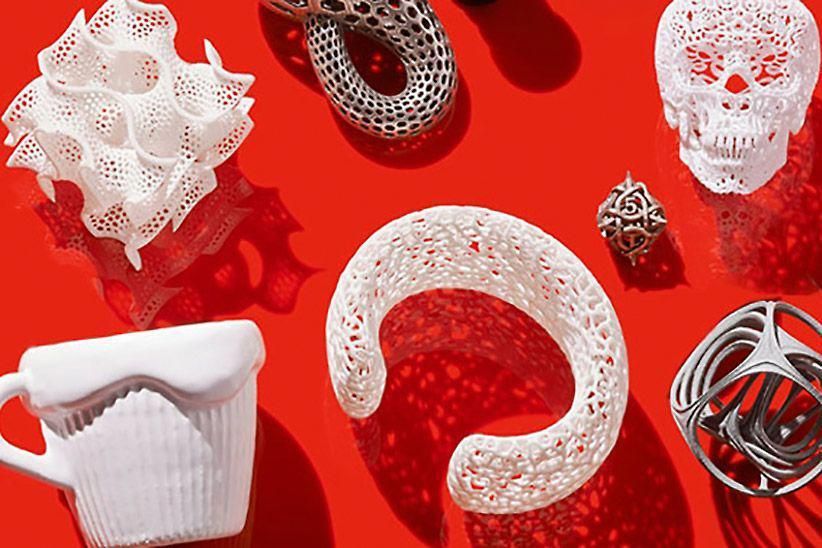
The ending of this story is good, Sasha has been creating and printing forms to order for some time. For this, a powerful computer and 6 printers were purchased. A year later, the business was sold and Alexander left for Canada for permanent residence.
Finalizing
3D printing helps companies of a completely different profile occupy a variety of niches in the market. At the same time, there are many free niches, and often the prospect of using 3D printing in a certain area is not so obvious.
The success stories associated with the use of additive technologies are numerous, from the aerospace industries to the creation of toys.
The presented cases help you look at the existing order of things a little differently. It makes economic sense to check how 3D printing can help the business you run. It may be profitable to enter a new sector of the market with the help of 3D printing. In any case, the ability to understand the choice of 3D printers for business can be an additional benefit.



